Jimmy Rogers
YACHT BROKER

Different Types of Yachts Explained
- August 14, 2020
In this article, I hope to dispel the confusion surrounding the categories of yachts that exist and explain what each means. There is definitely a lot of overlap in the categories or “types” out there…
The types below are put into these categories:
1. Express, Express Cruiser, Cruiser, Sports Cruiser
2. flybridge, sedan, sedan bridge, sport bridge, 3. motor yacht, pilothouse motor yacht, cockpit motor yacht, skylounge, 4. tri-deck, mega yacht, 5. sportfish, express sportfish, flybridge sportfish, convertible.
These are all terms to describe a yacht with a single deck above the hull and living quarters below. This type is known for its sporty and sleek look, like the sports car of the yacht world. The below photos and descriptions show the different styles that fall into this category
Riva 63 Virtus
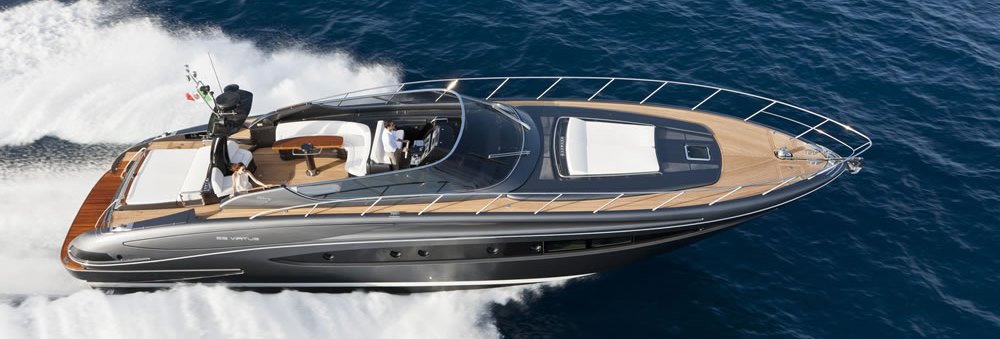
This beautiful Riva 63 Virtus is called an open express . Note the single deck above the hull and below is one level with living quarters. This is also referred to as a “Mediterranean” style yacht…maximum space for sun and laying out with little to no shade or cover. This particular boat has a bimini top that comes up via a hydraulic system to provide some shade
Sea Ray 51 Sundancer

This is an older 51’ Sea Ray Sundancer, which would be called a hard top express . Note the hard top over the helm area to provide shade. There is a gap between the windshield and the hardtop so it is still a totally open air area to provide a breeze. Here that open air area has an “isinglass” enclosure, which is a rollable plastic material that you can still see out of and take on or off depending on how much breeze and open air you want.
Sunseeker 60 Predator
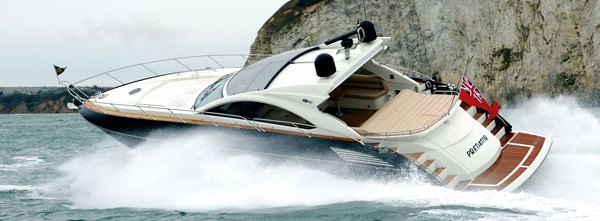
This Sunseeker 60 Predator is a hard top express with enclosed front windshield . In this case there is no gap between the front windshield and the hardtop, creating an area above decks on the boat that is fully sealed off on 3 sides. The back part is still open so the area above decks still has an outdoor feel, but the climate in that area is much easier to control, especially with the addition of some large A/C units. In this particular model, there is a huge sunroof that will slide back to make the area feel much more open if you so desired.
Pershing 80 Express
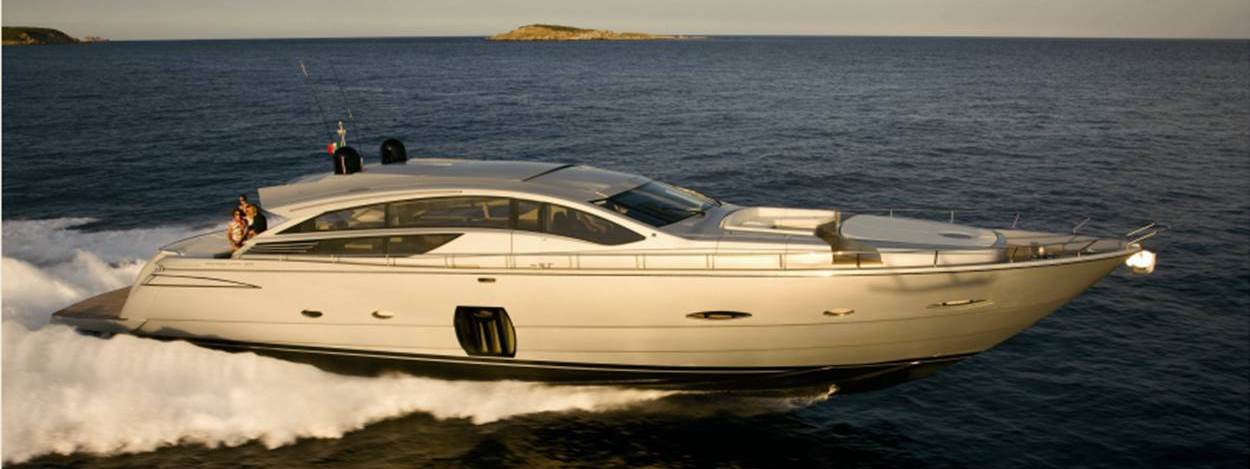
The Pershing 80 is an Express yacht with a fully enclosed area above decks .
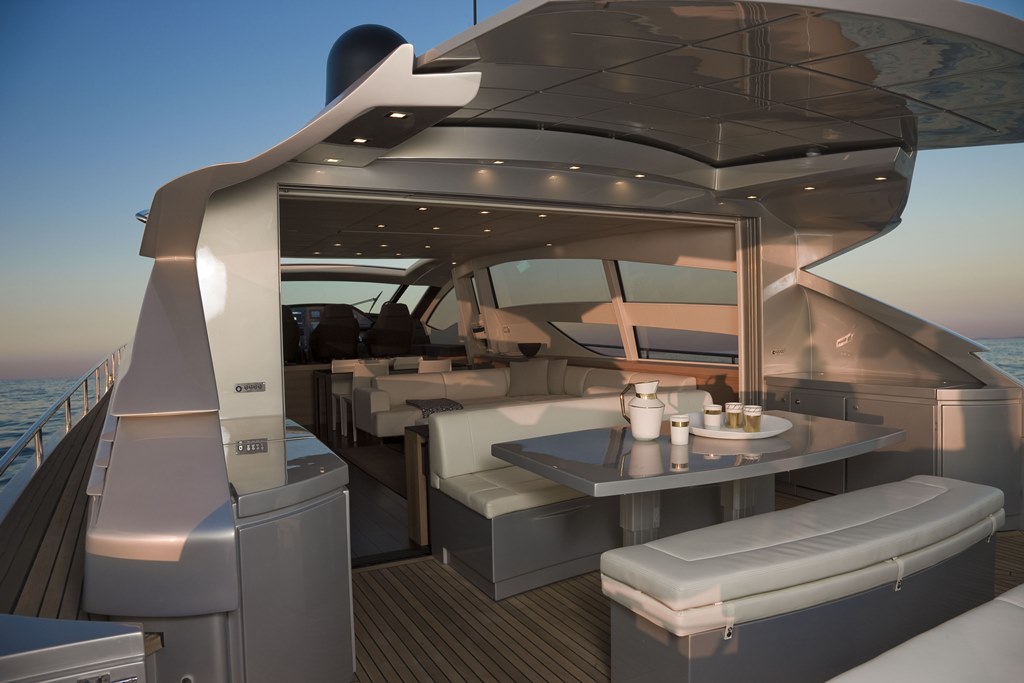
You can see here that even the back part of the hardtop has doors that close off the above decks salon from the open air aft deck. This creates a fully climate controlled indoor living area above decks. However, this Pershing 80 has many tricks up her sleeve like huge sun roof, sliding down side windows, and also the entire back glass enclosure pictured above will slide down into the floor to create a totally open feel throughout the entire upper deck…so you can have the total open feel, or total closed feel…just depends on your mood and the climate.
In summary, there are many different types of “express” boats, but the common thread that ties them all together is the 2 deck layout, one below the hull and one above the hull.
This is a yacht that has an area on the top of the superstructure that provides views all around the vessel, with a control station there as well as seating and lounging space.
Sunseeker 74 Predator Sport Bridge
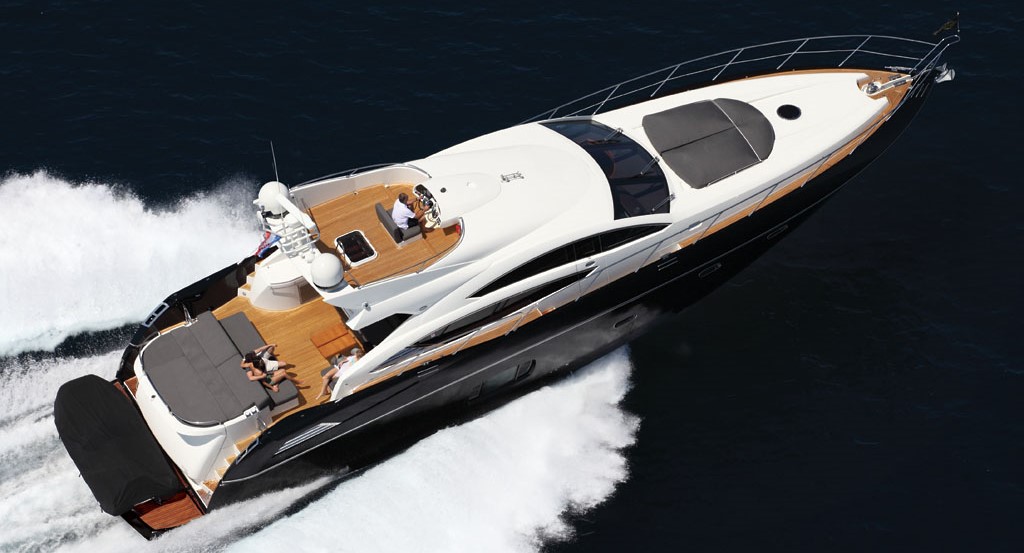
To start with the smallest type of bridge, this Sunseeker 74 Predator Sport Bridge is essentially an express yacht with an area up top just big enough for a control station and a couple lounge chairs. This gives a captain a place to run the yacht that is away from the owner and guests, or provides the owner a true open air feel while running the yacht if he chooses so from time to time. There is still a control station below. These sportbridges typically do not have any shade, not even a bimini top.
Ferretti 620 Flybridge
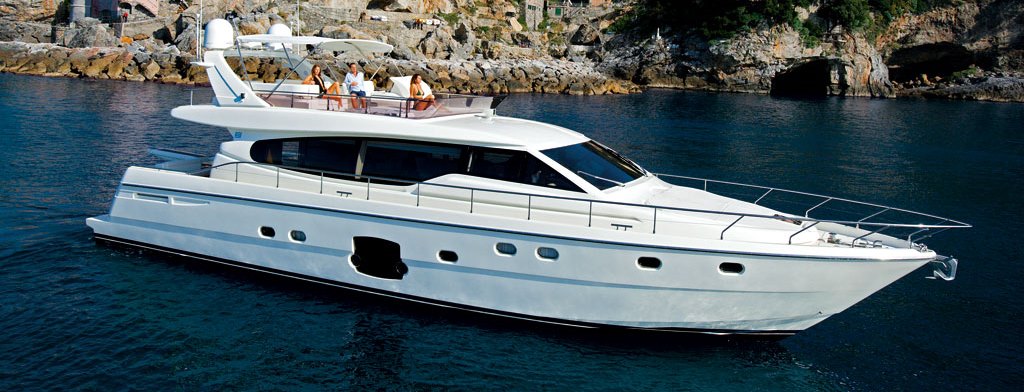
This Ferretti 620 is the traditional type of flybridge . There is a large amount of enclosed living space on the main deck, staterooms below and a large amount of outdoor lounge space on the bridge up top. There are two control stations, one on the bridge and one below…again giving the captain versatility to go wherever convenient, due to weather or to allow privacy for owner and guests. The flybridge here is very open with only a small bimini top to allow for the most outdoor feel possible.
Azimut 80 Flybridge
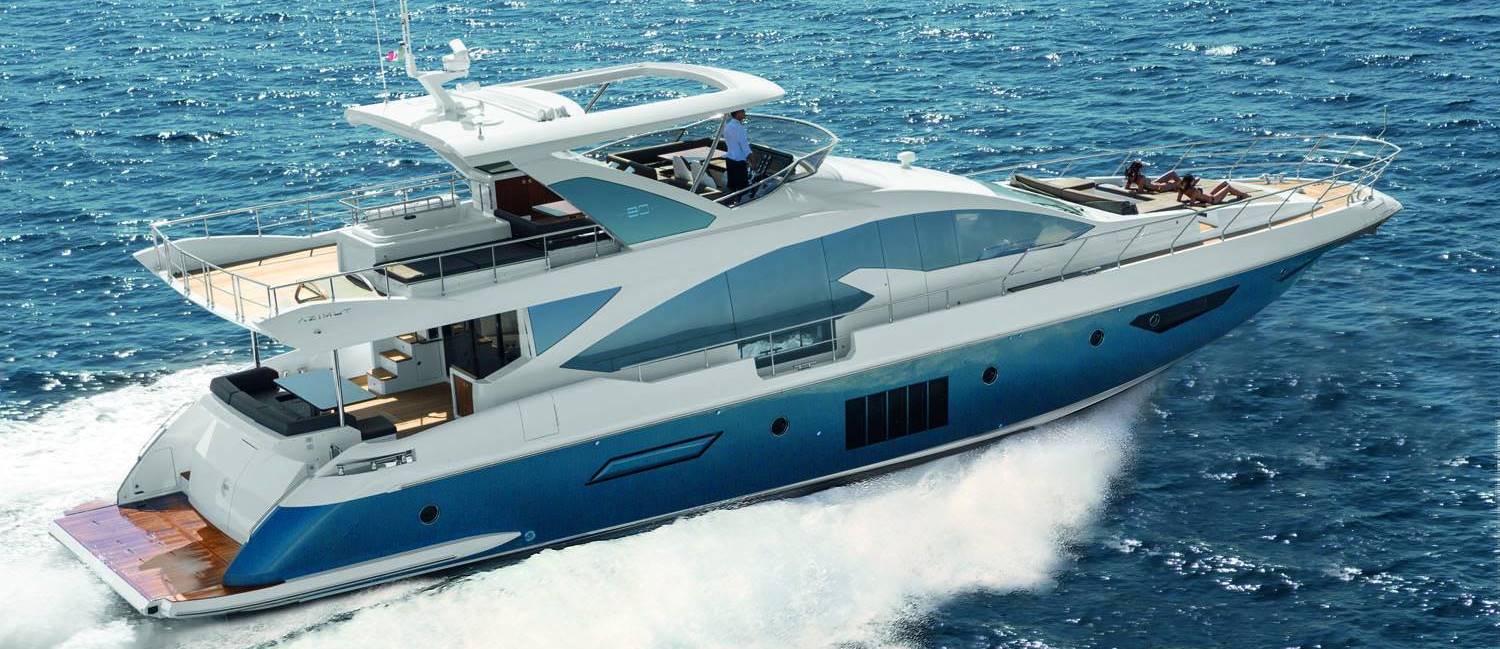
The Azimut 80 Flybridge here provides a hardtop with a retractable soft top inside of it, giving the passengers the option of shade or sun.
Sea Ray 58 Sedan Bridge
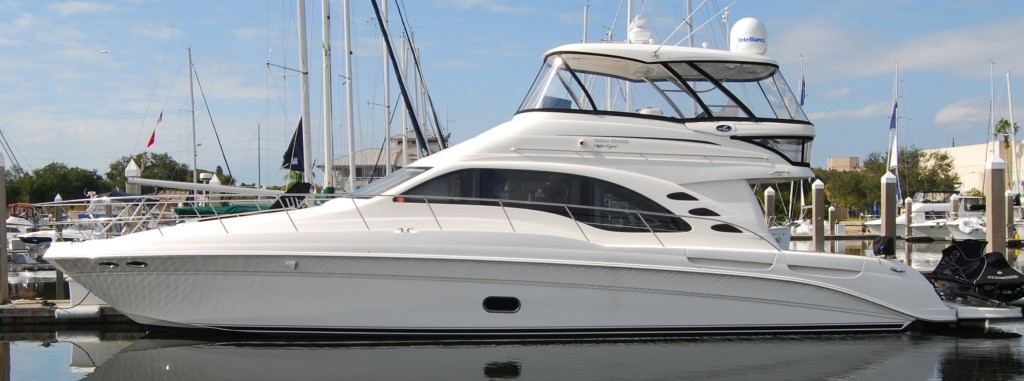
This Sea Ray 58 Sedan Bridge has a hardtop on the flybridge with a full plexiglass enclosure around it . This provides more permanent shade and the ability to have A/C or heat in the bridge area…allowing the flybridge area to be utilized even in more extreme cold, warm or rainy weather. This Sedan only has one helm station, located on the bridge, to allow for the maximum amount of living space on the main deck.
Maritimo 48 Enclosed Bridge
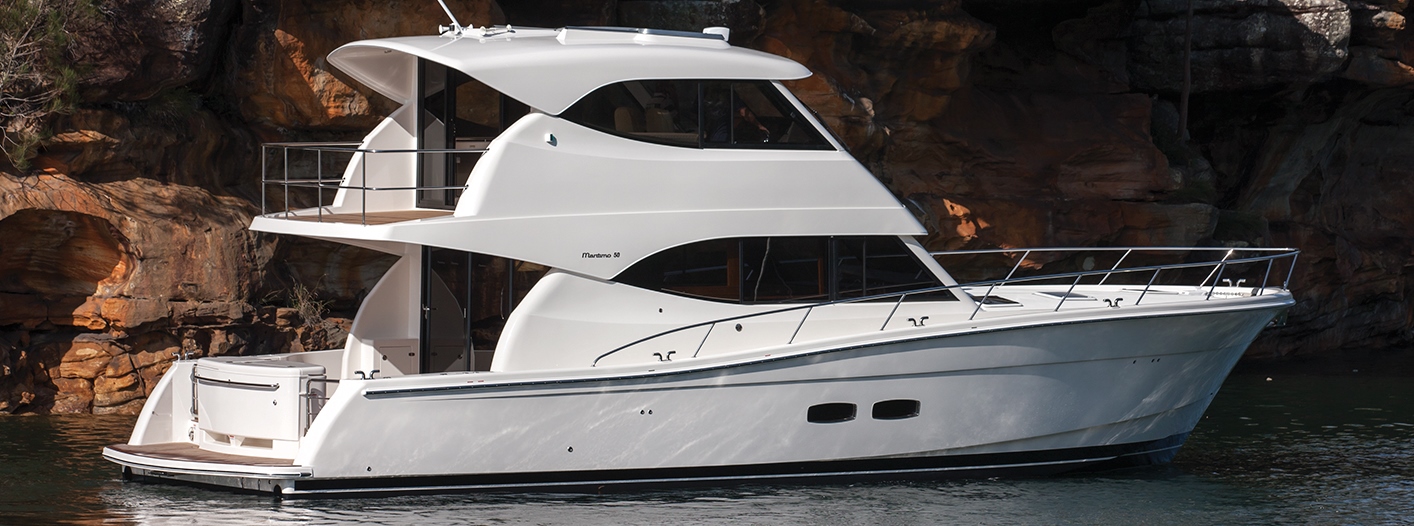
The Maritimo 48 Enclosed Bridge offers the ultimate in climate control and protection. For boaters that desire full protection from the elements this type of yacht will keep you comfortable regardless of the outside temperature. This yacht also only has one helm station located on the bridge that offers the maximum amount of living space on the main deck.
The term motor yacht is probably the most traditional and overarching of all these types, basically meaning “Large Recreational Vessel that is Motor Powered”…so technically that could include an express, flybridge, sportfish…anything with a motor. But this denotation in the modern world of yachting typically refers to a multi deck vessel similar to a flybridge but with a larger interior main deck.
Hatteras 80 Motor Yacht
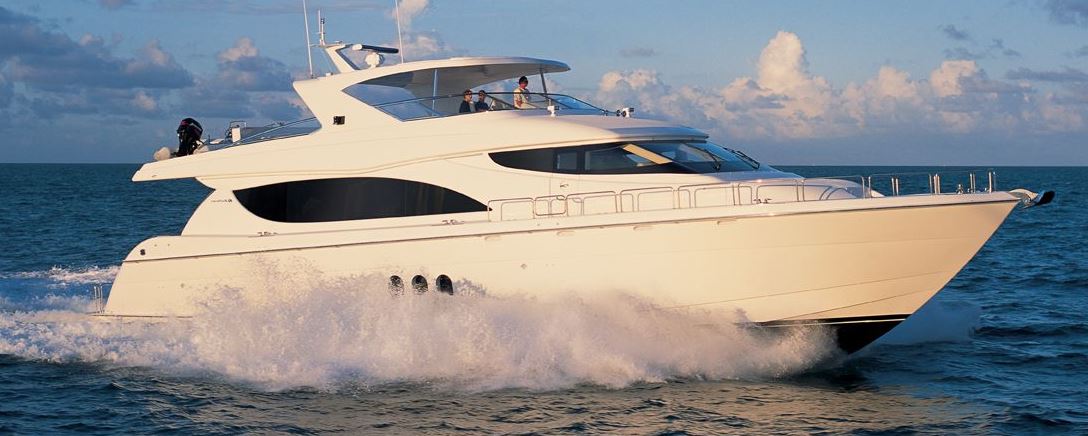
The Hatteras 80 Motor Yacht is an open bridge Motor Yacht with hard top . As you can see motor yachts typically have a larger and further forward interior area and smaller outside bow space. This is the preferred type of vessel for long stays aboard as they offer the maximum amount of living quarters per square foot of boat. Most also have an upper and lower helm station, allowing for different piloting options, in the open on the bridge or on the main deck in a fully climate controlled environment.
Westport 112 Pilothouse Motor Yacht
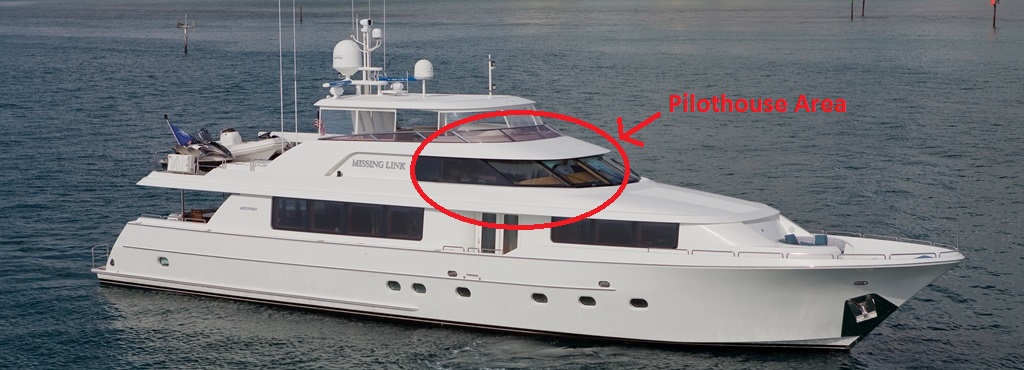
The Westport 112 Pilothouse Motor Yacht is one of the most popular motor yachts in its size range. From the above photo you can see that the pilothouse is located on a split level sort of area between the main deck and the flybridge. It allows the captain to have a centrally located command center on the yacht that is away from the living and lounging areas. There is still an additional command center on the bridge, but the main nerve center of the yacht is the pilothouse. In smaller yachts, the pilothouse area may be located on the main deck and not in a totally separate area…the term pilothouse basically means “the area where the ship is controlled by the ship’s captain”
Lazzara 80 Skylounge Motor Yacht with Cockpit

This 80 Lazzara has both the Skylounge and Cockpit. The Skylounge is a term for an enclosed flybridge with an interior living space that is fully climate controlled . Many skylounges have windows that slide down or sunroofs also that allow you to get the open air feel as well. With 3 decks that have an enclosed living area, this is by definition also a tri-deck…but that term is usually reserved for larger megayachts.
The cockpit is a nice addition on yachts where the owner or guests intend to do some fishing or diving. It provides a great platform for the recreational sportsman that is right at the water level.
A Tri-Deck is a yacht that has 3 levels of enclosed living space. Although smaller Tri-Decks exist like the 80 Lazzara above, the term is typically seen used in yachts in excess of 120 feet.
Many definitions exist for what defines a Mega Yacht, but I believe it to be a vessel in excess of 80 feet.
Westport 130 Tri-Deck
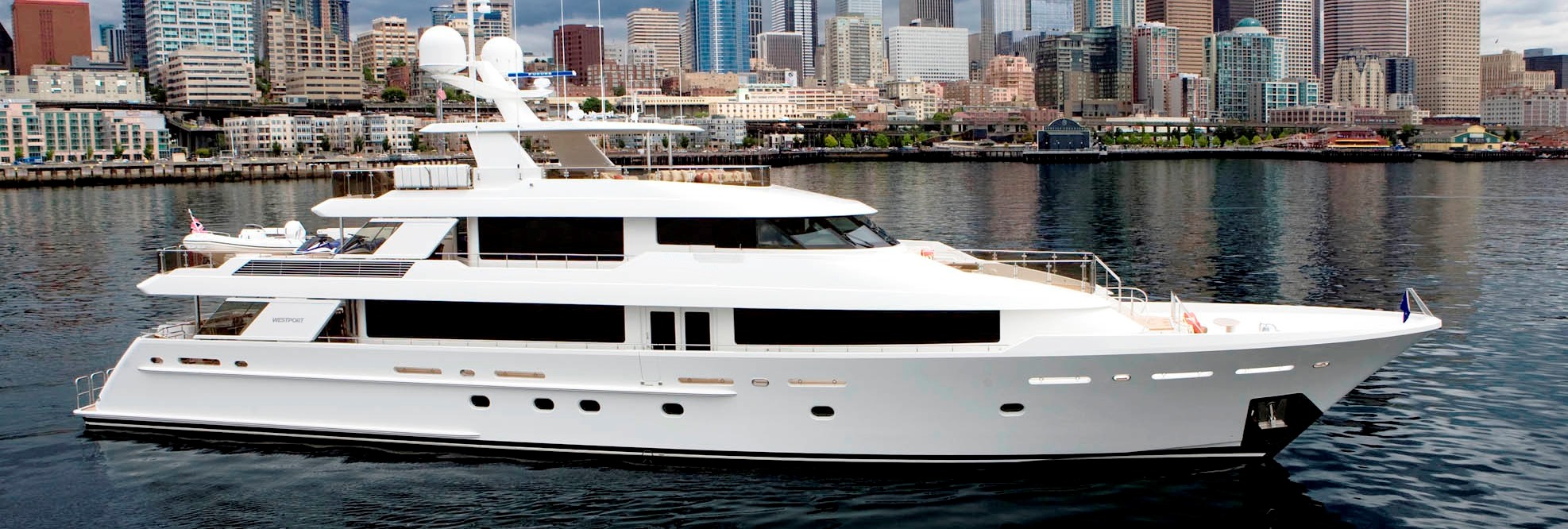
Notice on this 130 Westport that there are 2 decks above the hull with enclosed, climate controlled living areas and one deck below, for a total of 3 decks enclosed decks. There is also a large flybridge above and multiple other open areas for lounging.
Christensen Shipyard Megayacht
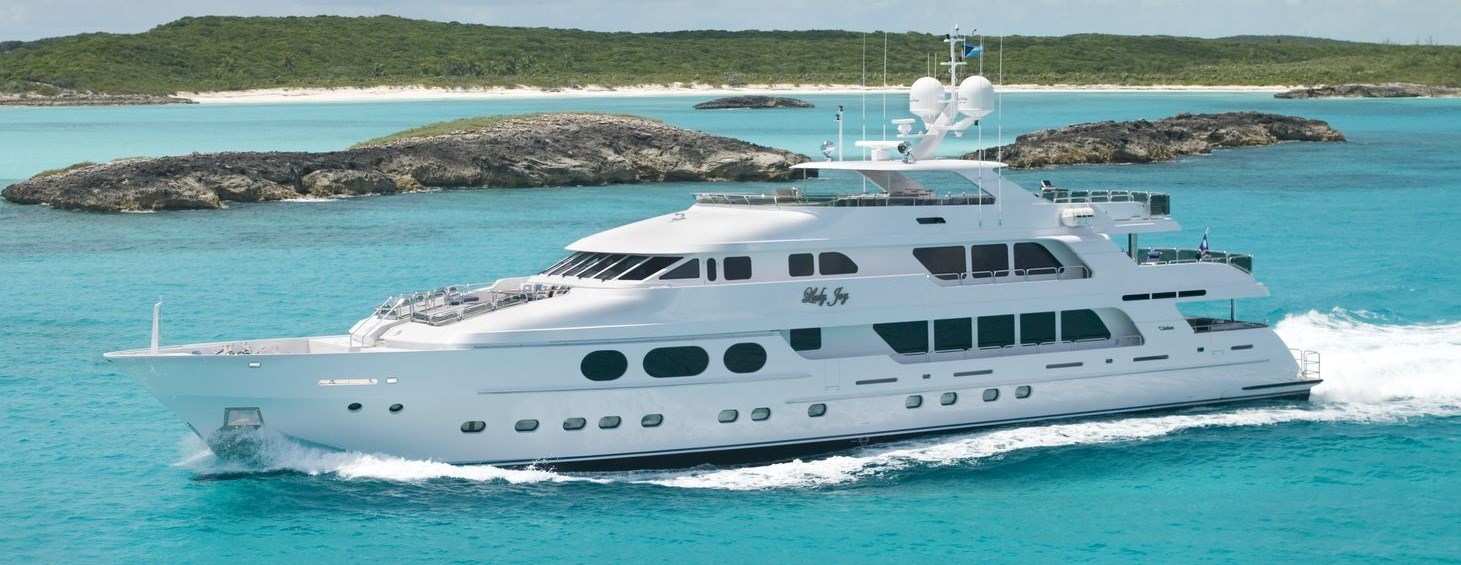
The sky is the limit with mega yachts…a boatyard like Christensen Shipyard will build the yacht of your dreams, designed to you exacting specifications…
A Sportfish is any yacht that is geared towards fishing. This will mean that they have a large cockpit with which to fish out of, designated storage for rods, bait, tackle and the day’s catch. They typically will also be higher performance than a motoryacht, able to get out to the fishing grounds and back as fast as possible, as well as handle rough seas.
Cabo 52 Express
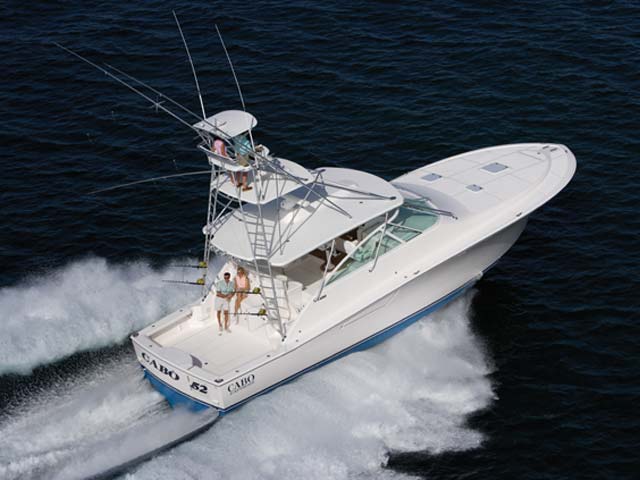
The Cabo 52 Express is the express sportfish style, in which it has 2 decks, one above the hull and one below. The tower located above the hardtop is used by fisherman to help spot anything that will help them catch fish, be it a tide line, bait jumping or the prized marlin.
Hatteras GT63
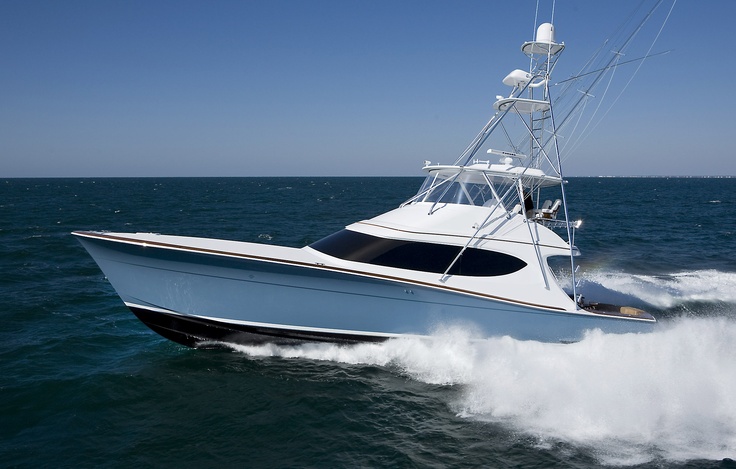
This Hatteras GT63 is a Flybridge Sportfish , with an enclosed living area above the hull and bridge. This yacht also has the tower for spotting above the hardtop. She is bred for high speed performance in rough seas and can blast right through 6 foot waves and hit top speeds of over 40 knots. This type of “Sportfish DNA” is for the yachtsman that wants to chase fish even if the seas are rough, and appreciates a yacht that is solidly put together to handle those conditions.
Hatteras 77 Convertible
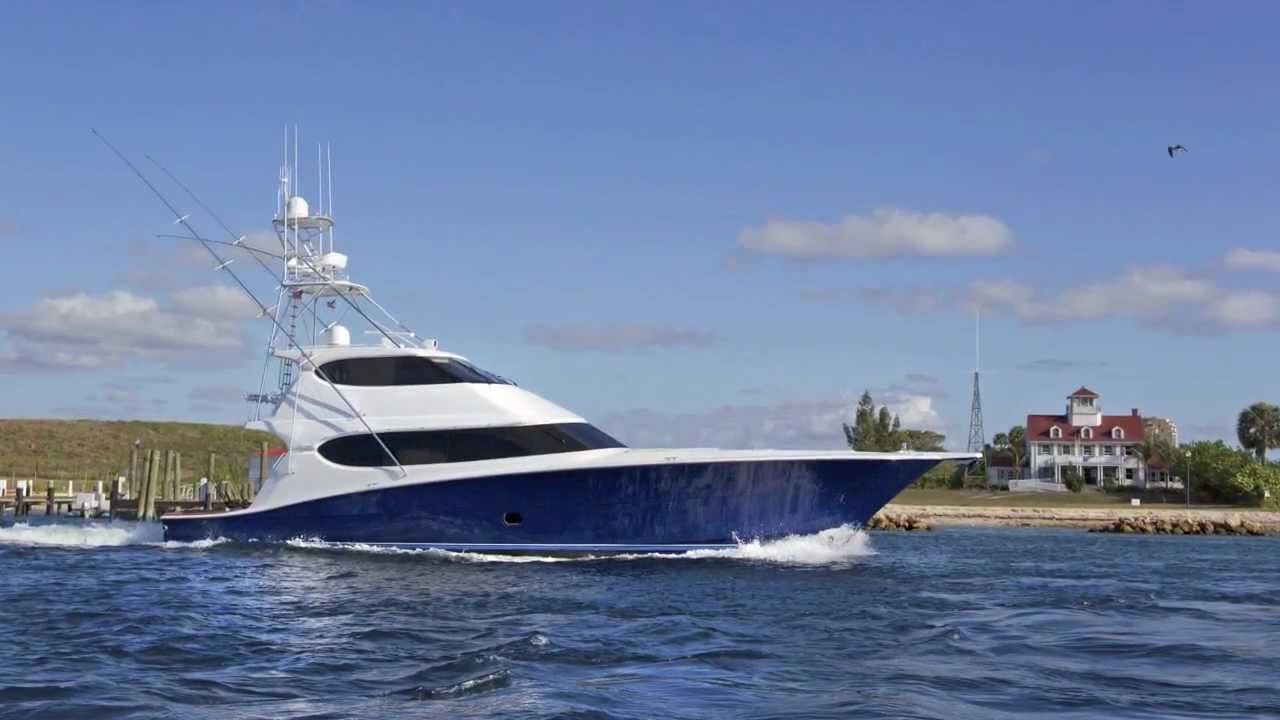
The Hatteras 77 Convertible is an incredible yacht that incorporates the amenities of a motor yacht and a sportfish in the same package…hence the term Convertible…able to convert to a fishing or a cruising yacht as needed. She also has an enclosed flybridge up top for climate controlled comfort.

OneWater Yacht Group
- 727-734-8707
- [email protected]
Recent Articles
Why buy a 58 sabre 2023 sabre lucy belle for sale- vessel walkthrough, the different types of yacht propulsion: benefits and drawbacks, buying a pre-owned yacht, why use a professional yacht broker, 2017 hatteras gt70 “gear jammer” offered for sale by her original owner, 2000/2012 novatec 80 supernova- incredible value for a pre-owned yacht, preparing your yacht for sale- how to maximize value and minimize time on market, 2008 marlow 78e command bridge “buzz mobile” for sale, selling an older classic yacht, get in touch, find your yacht with jimmy rogers..
- 727-453-0422

Walkthrough of the 2021 Pursuit S378 "MR. LUCKY" offered for sale by Jimmy Rogers of the One Water Yacht Group Tampa Bay. #pursuitboats #onewater #boatsforsale #centerconsolesonly For more information about this boat email me: [email protected] Located in Dunedin, FL in the Tampa Bay area
2021 Pursuit S378 Features Walkthrough "MR. LUCKY" FOR SALE
Jimmy Rogers August 23, 2024 7:44 pm
Round Table Discussion about our latest trade-in, a 2020 Sunseeker 52 Manhattan Flybridge Yacht. Learn more about what our favorite parts of the yacht are and what we think in this open forum chat. #sunseekeryachts #onewater #owyg For more details on this boat, contact us at: One Water Yacht Group Tampa Bay [email protected] 727-387-3697 *One Water Yacht Group Tampa Bay is your Sunseeker Yachts Dealer for Florida's West Coast as well as your experienced and dedicated yacht brokerage and new construction consultation firm
"Our Trade" 2020 Sunseeker 52 Manhattan- OWYG Tampa Bay Team Discussion
Jimmy Rogers August 19, 2024 8:07 pm
Walkthrough of OUR TRADE 2020 Sunseeker 52 Manhattan located in Tampa, FL. In Excellent Condition and ready for adventure! Contact Me for more information Jimmy Rogers Certified Professional Yacht Broker [email protected] #sunseekeryachts #OWYG #onewater
OUR TRADE! 2020 Sunseeker 52 Manhattan Flybridge Walkthrough
Jimmy Rogers August 16, 2024 9:45 pm

What is a Cabin Cruiser Boat (and what makes it Unique)?
If you’re like most people, the word “cabin cruiser” conjures up images of luxury and relaxation. And you’re not wrong. Cabin cruiser boats are designed for comfort and entertaining, with plenty of space for overnight guests. But there’s more to these boats than meets the eye.
In this blog post, we’ll explore the different types of cabin cruiser boats, their features, and what to look for when choosing the right one for you. So, whether you’re in the market for a new cabin cruiser or just want to learn more about these popular boats, read on!
Table of Contents
What is a Cabin Cruiser?
A cabin cruiser is a type of recreational boat that typically combines an enclosed living space with outdoor areas for relaxing and enjoying the scenery. They are popular for both day trips and extended cruising vacations, as they provide a comfortable place to stay while exploring new areas.
Cabin cruisers first became popular in the early 20th century as a way for people to enjoy the outdoors while also having a comfortable place to sleep at night. The first cabin cruisers were typically small and had only basic amenities, but they gradually became larger and more luxurious over time.
Today, most cabin cruisers are between 30 and 50 feet long and can accommodate up to 10 people comfortably. They usually have one or two bedrooms, a kitchen, and a living area, as well as an outdoor deck space. Some larger models may even have multiple decks and multiple bedrooms.
There are many different styles of cabin cruisers available, from small and basic models to large luxury boats. Whatever your budget or needs, there is likely a cabin cruiser out there that will suit you.
What are the different types of Cabin Cruiser, and what do they look like?
Cabin cruisers come in many different shapes and sizes, but they all have one thing in common: they’re designed for comfort and convenience. Whether you’re looking to enjoy a day of fishing on the open water or simply exploring a new coastline, cabin cruisers are a perfect choice.
Luxury Cruisers
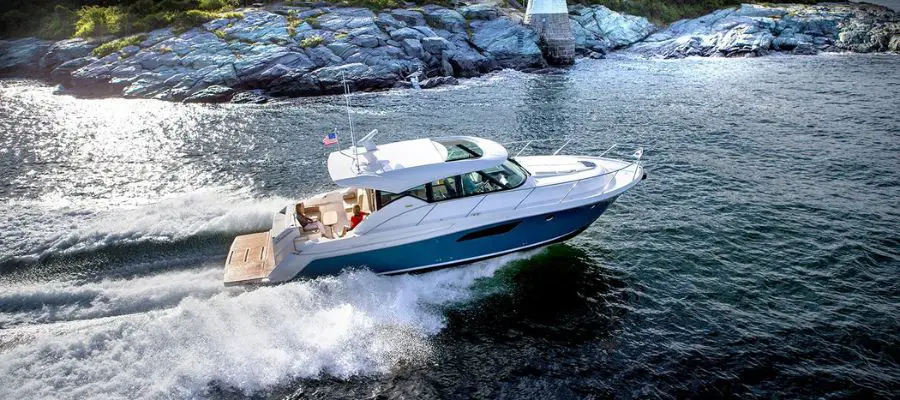
Luxury cruisers are what most people think of when you refer to cabin cruisers. They usually have all the bells and whistles and amenities that make your life easy when out on the water. There most meant for those who boat recreationally; however you could easily rig them up for some deep-sea fishing.
Downeast Cabin Cruisers

Downeast cabin cruisers are characterized by their long, sleek hulls and slender profiles. These boats are designed for speed and maneuverability, making them ideal for exploring narrow waterways. Many downeast cabin cruisers also feature enclosed bridges, which offer protection from the elements while still providing ample seating and storage space.
Canal Cabin Cruisers

Canal cabin cruisers are similar to downeast cabin cruisers in terms of their overall design. However, these boats are typically shorter and thiner, which makes them more sutable for narrow canals. Canal cabin cruisers are also equipped with shallow-draft hulls, making them ideal for cruising through shallow waters.
Sport Fishing Cabin Cruisers
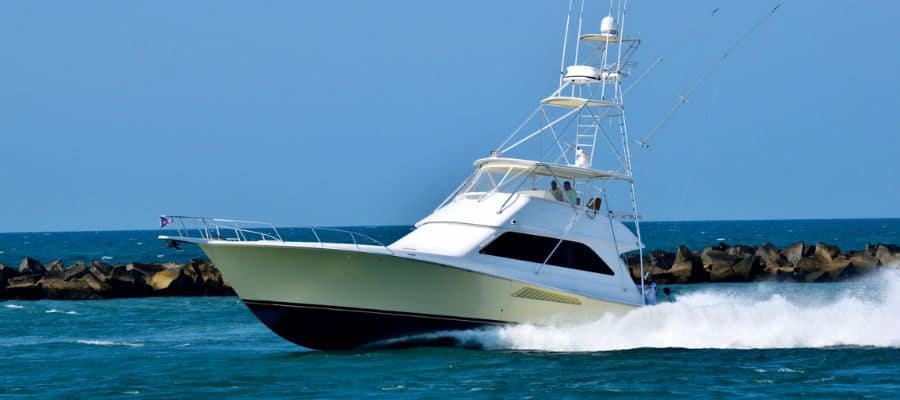
Sport fishing cabin cruisers are designed for serious anglers. These boats feature large cockpits and plenty of storage space for all your gear. Many sport fishing cabin cruisers also come equipped with live wells, bait stations, and fish finders, making them the perfect choice for a day of fishing on the open water.
How much do Cabin Cruisers Cost?
Cabin cruisers generally cost around $300,000-$1 million, depending on the size, brand, features, etc. You can find used cabin cruisers for significantly cheaper, even on boats just a couple of years old.
Cabin Cruiser vs Yacht vs Cuddy Cabin
There are a few key differences between cabin cruisers, yachts, and cuddy cabins that you should be aware of before making a purchase. For starters, cabin cruisers are typically smaller than yachts and cuddy cabins.
This makes them more maneuverable and easier to dock, but it also means they have less space on board. Yachts, on the other hand, are much larger and can accommodate more passengers and crew. Cuddy cabins are usually even smaller than cabin cruisers making them even easier to maneuver but offering less space.
Another key difference is that Yachts cabin cruisers typically have an open layout, while cuddy cabins tend to be more closed off. This means that cabin cruisers are generally more social boats, as there is less of a barrier between the cockpit and the rest of the boat.
Finally, yachts are typically the most expensive, cabin cruisers are second, and cuddy cabins are usually the cheapest. This makes cabin cruisers a great option for those looking for a quality boat without breaking the bank. However, cabin cruisers still can cost upwards of millions of dollars, so they are not an option for everyone.
Overall, cabin cruisers are a great choice for those looking for a quality boat that can be maneuvered by yourself without needing a captain and are relatively affordable compared to yachts. Yachts are better suited for those who have the budget for a more luxurious option and are looking for more space and privacy on board. Cuddy cabins are best for people who don’t want to spend a whole lot of money and what something smaller that involves less work.
What are the advantages and disadvantages of Cabin Cruiser?
Cabin cruisers offer many advantages over other boats including more space and amenities, greater stability, and easier docking (compared to yachts). However, cabin cruisers also have some disadvantages, such as higher costs and heavier weight.
Advantages:
1. More Space: Cabin cruisers offer much more interior space than other types of boats of comparable size. This extra space can be used for storage, sleeping quarters or simply to provide a more comfortable cruising experience.
2. More Amenities: Cabin cruisers also typically come equipped with more amenities than other types of boats. These amenities can include anything from full kitchens and bathrooms to spacious lounge areas and state-of-the-art entertainment systems.
3. Greater Stability: Because of their larger size and weight, cabin cruisers are generally much more stable than other types of boats. This makes them ideal for cruising in rough waters or for hosting large parties on board.
4. Easier Docking: Cabin cruisers can be easier to dock than other types of boats, thanks to their greater stability and the fact that they typically have two or more engines for added maneuverability.
5. Luxurious Accommodations: Many cabin cruisers are designed with luxury in mind, offering high-end finishes and amenities that rival those found in upscale homes.
6. Ideal for Entertaining: Cabin cruisers are often used as floating party venues, thanks to their spacious interiors and convenient onboard amenities.
Disadvantages:
1. Higher Costs: Cabin cruisers can be significantly more expensive than other types of boats, both to purchase and to maintain.
2. Heavier Weight: Cabin cruisers are typically quite large and heavy, which can make them difficult to tow and store.
3. More Difficult to Maneuver: Because of their size and weight, cabin cruisers can be more difficult to maneuver than other types of boats. This can make them challenging to dock in tight spaces.
What are the top brands to purchase quality Cabin Cruisers?
There are a few great brands when it comes to cabin cruisers, including:
- Sea Ray – luxurious cabin cruiser with all the bells and whistles
- Tiara – reliable and well-built cabin cruisers
- Formula – Very reputable brand
- Cutwater – affordable and stylish cabin cruisers
All three manufacturers offer high-quality options that will provide you with years of enjoyment on the water. When choosing a cabin cruiser, it is important to consider your budget and what features are most important to you.
What should you look for before buying Cabin Cruisers?
There are many things you should look for before buying a cabin cruiser. The size of the boat, the type of engine, and the amenities offered are just a few things to consider. You also need to decide if you want a new or used model. Here are a few tips to help you find the perfect cabin cruiser for your needs.
What do you plan to use your cabin cruiser for? Whether you want to spend weekends on the lake or cruise around the coastline, it’s important to choose a model that suits your needs.
One of the most important things to consider when buying a cabin cruiser is the size of the boat. You need to make sure that the boat is big enough for your needs. Cabin cruisers come in all different sizes, so you should be able to find one that is perfect for you.
- Type of Engine
Another thing you need to consider when buying a cabin cruiser is the type of engine. There are two main types of engines, gasoline and diesel. Gasoline engines are less expensive, but they require more maintenance. Diesel engines are more expensive, but they last longer and require less maintenance.
When you are looking at cabin cruisers, you should also consider the amenities that are offered. Some cabin cruisers come with features like air conditioning, televisions, and stereos. Others do not have any of these features. You need to decide what amenities you want and how much you are willing to pay for them.
- New or Used
Finally, you need to decide if you want a new or used cabin cruiser. Used models can be cheaper, but they may not have all of the features that you want. New models will be more expensive, but they will have all of the latest features. You need to decide what is more important to you, price or features.
These are just a few things to consider when you are looking at cabin cruisers. If you take your time and do your research, you should be able to find the perfect boat for your needs.
Final Words
In conclusion, a cabin cruiser boat is a great choice for anyone looking for a versatile that you could live in and take anywhere. Whether you’re fishing, swimming, or just cruising around, a cabin cruiser boat can provide you with plenty of enjoyment. With so many different models and styles to choose from, you’re sure to find the perfect cabin cruiser boat for your needs. So what are you waiting for? Get out there and start enjoying the water today.
- Recent Posts
- What Is The Cheapest Way To Store A Boat? - February 28, 2023
- Do Boats Need Bottom Paint? (Uncovering the Truth) - February 2, 2023
- How Much Is Bass Boat Insurance? (Real Quotes) - January 18, 2023
Ita Yachts Canada
Brokerage / Courtage
Understanding the different categories of boats
There are many types and names given to boats such as: Cuddy, Open Deck, Center Console, Express, Express Cruiser, Cruisers, Sport Cruiser, Opens, Cuddy, Sedan Bridge, Flybridge, Sport Bridge, Aft-Cabin, Sports Cruiser, Cockpit Motor Yacht, Motor Yacht, Motor Yacht Pilothouse, Motor Yacht, Megayacht, SuperYacht, Sport Fish, Fishing Boat, Sport Express Fish, Fishing Convertible, Skylounge, Trawler, Fast Trawler, House Boat
There are no strict definitions, but tendencies accepted by all. We have chosen some photos to illustrate what a boat in this category would resemble, but always remember that there are several variants and some boats can easily fit into several categories.
OK, let’s start …
Cuddy Cabin : boat less than 30 feet with a small cabin at the bow of the boat. This small cabin is furnished with a large cushion only and perhaps a porta-potti toilet. Everything is pretty rudimentary.

Open Deck : boat less than 40 feet with the bow section offering easy access to a sitting area. Generally, there is a space for a toilet on the passengers side by the windshield. Everything is designed to accommodate friends and family for a day excursion, where comes the name, Day Boat.

Center console : boat powered by outboard engines, the whole boat is easily accessible, meaning that it is easy to move about the boat with a central cockpit. Often a toilet is incorporated in the cockpit and often has a fabric bimini or hard top roof. With a higher freeboard that most boats in this length, it is a very versatile boat, very popular in the south of the United States. The Boston Whaler or Everglades Rugulator are a perfect match to this category.

Express : boat with inboard engine (s) with a fairly large cockpit and a cabin that allows comfort. It usually offers the possibility of sleeping 4-6 people and the cabin has a toilet in a closed compartment. A galley with a microwave, a hot plate and sometimes a dinette area. The options of air conditioning, , hot water and a generator for comfort at all times is also available in a Express model. This category also uses names such as: EXPRESS CRUISER, CRUISER, SPORT CRUISERS, SPORT YACHT and among Europeans: OPEN and FEATURED. The Searay Sundancer 33 or 48 correspond to this description.

FLYBRIDGE : boat that has a helm above the interior cabin accessible from the cockpit by stairs or ladder that allows an improved vision while navigating but especially adds additional living space for all on board. Depending on the configuration of the main deck, there are several possible variations … The Azimut 53, 55, 60, 62 or Searay L510 Fly, for example, correspond very well to this description.

Sedan Bridge : offers easy access to the cockpit area without the need to climb stairs as the cockpit is almost at the same level as the boat’s aft platform. A Sport Bridge can also offer this easy access and basically both the Sedan Bridge and Sport Bridge fit in the flybridge category.

Aft-Cabin : it is also a flybridge but there is a stateroom located on the stern of the boat. This boat will require you to climb a small ladder or stairs to get access to the cockpit area and then again more steps to gain access to the helm. The engine is found in the central part of the boat, usually below the living room floor. The Carver 456 or Meridian 408 fits this description.

Cockpit Motor Yacht : it fits into the same description as the Aft-cabin except that there is an area at almost the same level as the aft platform to embark onto the boat, much like a sedan bridge, but there are stairs or a small ladder to access the cabins and the cockpit. The engines are still under the living room floor. The Meridian 459 perfectly matches this description or the Carver 564. These are of course flybridges also.

Motor Yacht: is a flybridge first and foremost, but a Motor Yacht when the boat attains a certain length. Sometimes we add the abbreviation M / Y to other descriptions, such as AFT-CABIN M / Y. In summary, several manufacturers add the letters M / Y as soon as the boat has engines. Not a precise category but what is certain is that it is a boat with engines.

Pilothouse : think of the Carver 56 Voyager for example, it is primarily a flybridge but with a well arranged helm in a section separate from the rest of the boat. Sometimes we mention RPH, for Raise Pilot House, when the helm is completely separate but above all raised above the main deck. This helm is not on the flybridge itself. Several European manufacturers offer this configuration for the helm, such as Ferretti and Sunseeker.

Skylounge : this is primarily a flybridge with a helm located on the upper deck like all flybridges except that the cockpit will be completely enclosed from the outside elements, ie protected from the sun and / or rain. Often mentioned as a fully enclosed helm, very comfortable with the air conditioning/heat, seats, sofa for people accompanying the captain. It really is another environment on board the yacht, usually there is a full bar, TV, etc.

Yacht : here we are talking about a boat greater than 50 feet, rather luxurious. It is a Motor Yacht that is at the top of the range. Often the Azimut, Princess, Sunseeker, Sanlorenzo, Ferretti, Riva, bear this name. The new Searay L series also fits this description.

Megayacht : it is customary to refer to a megayacht when the vessel is over 100 feet and less than 200 feet in length but like the other types of boats, there are no rules. Normally the boat would have at least 3 decks including a sundeck. The lower deck for the bedrooms, the main deck for the living room, galley, cockpit or additional small lounge, an RPH (raised pilot house), an upper deck with an enclosed and comfortable area. The sundeck on the top deck for sun and sometimes a spa.

Superyacht : these are custom-made yachts for a very wealthy client. The value easily exceeds 80 million USD and can reach and exceed 500 million USD. It measures at least 200 feet and up to 500 feet. They often have a very large swimming pool, a heliport, 4 to 5 decks. In short, very luxurious yacht with crews of 15 to 30 people. Normally there are anyway from 3 to 6 rooms for 12 guests. Sleep quarters for the crew are separate and ratio with the length of the vessel.

Sport Fish : fishing boats in this category include several types of fishing boats and depends on length. One can qualify a 20-foot boat a sport fish but generally they exceed 30 feet. They are well built boats, strong and robust as they can handle an uneasy sea. They have very powerful engines. They are also called Fishing Boat. The most prominent of this category, to name a few, are the brands Viking, Bertram and Hatteras. They always have a helm on the upper deck and a very distinctive appearance.

Express Sport Fish : these are fishing boats without a raised helm but may have a TUNA TOWER.

Convertible Fishing : again, this is a Fishing Boat but with a very luxurious interior in line with a luxury Cruiser and even sometimes more luxurious than a Motor Yacht. Usually the Convertible will have the upper deck completely enclosed for more comfort. The helm on the upper deck is then merged with a full lounge with refrigerator and of course a bar. A class A yacht.

Tuna tower : is a helm at the top of a stainless steel tubing structure to provide excellent visibility inorder to spot the schools of fish in the distance.

Trawler : a boat designed for long periods of navigation. The engine room is particularly functional, the different systems are very visible and above all are easy to maintain. The functional aspect is the priority of the manufacturer. The helm is also a highlight. Usually, it is easy to move around outside the boat (the bulkwalks are wide). Normally there is one engine and the maximum speed hardly exceeds 10 to 12 kn.

Fast Trawler : is a Trawler but speed performance of the boat is superior, in fact, the speed can reach and exceed 20 kn. Often, there will be twin engines.

House Boat : a boat that allows a lifestyle that is similar to floating cottage. It is usually mounted on a structure similar to a pontoon. The main deck includes the helm, galley, staterooms and bathrooms and often there is a roof terrace. This is not a fast moving boat but does allow for lots of room for entertaining and family life. Some houseboats can reach over 70 feet in length.

Lobster Boat : originally built as a fishing vessel on the northeastern coast of the United States with the stern open so as to allow, for example, to easily access fishing nets or cages. The bow of the boat was designed to tackle big waves as fishermen rarely have the luxury to wait for a calm day. Today, Hinckly for example, produce this type of boat in a more luxurious format.

There are also many other terms as the nautical vocabulary is quite elaborate and especially very adaptable. The same boat can be labeled differently and left up to not only the experience of the sales person but the clientele that the manufacturer is aiming.
Do not hesitate to contact the brokers at Ita Yachts Canada for any questions at 514-521-1221, we are at your disposal.
Share this:
Published by Guy Bolduc
View all posts by Guy Bolduc
Leave a Reply Cancel reply
Discover more from ita yachts canada.
Subscribe now to keep reading and get access to the full archive.
Type your email…
Continue reading
- CATAMARAN MOTEUR
- CATAMARAN VOILE
- CENTER CONSOLE
- FISHING BOAT
- SPORT BRIDGE
- ABSOLUTE YACHTS
- CRUISERS YACHTS
- FOUNTAINE PAJOT
- GRAND BANKS
- KADEY-KROGEN
- MOCHI CRAFT
- MINIGHT EXPRESS
- MONTE CARLO
- NORTHERN MARINE
- OCEAN ALEXANDER
- OUTBACK YATCHS
- PARDO YACHTS
- PRESTIGE YACHTS
- SILENT YACHTS
- $1,5 M to $2,9 M
- $3,0 M to $4,9 M
- $5,0 M to $6,9 M
- $7,0 M to $9,9 M
- $10,0 M and more
- UNDER 49 FEET
- 50 to 59 FEET
- 60 to 69 FEET
- 70 to 79 FEET
- 80 to 89 FEET
- 90 to 99 FEET
- MORE THAN 100 FEET
- CENTRAL AMERICA
- PERSIAN GULF
- UNITED-STATES OF AMERICA
- YACHTS REGISTERED UPDATED
- VIRTUAL TOUR 3D
- YACHTS FOR SALE
- IMPORT-EXPORT
- BLOGUES, NOUVELLES ET CONSEILS
- PODCAST VIDEO
The 7 Types Of Modern Warships Explained
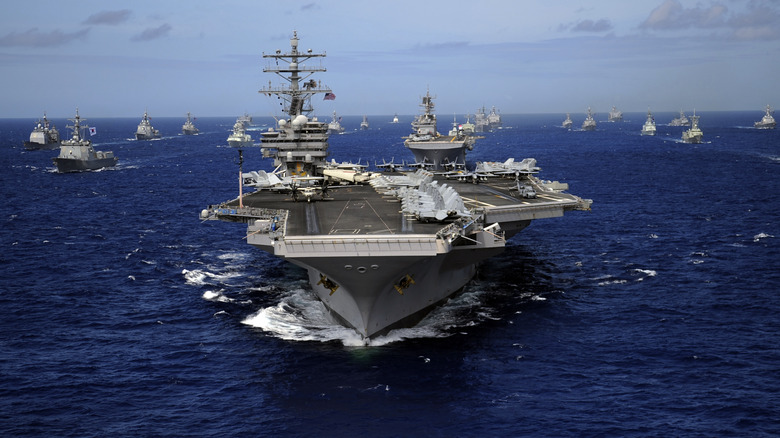
Naval warfare can be a captivating subject, evoking images of mighty vessels navigating vast oceans, locked in strategic battles, and defending the interests of nations. From legendary ships of the past to the sleek warships of today, the evolution of naval warfare is a testament to our pursuit of maritime exploration and supremacy. Modern navies have a wide variety of ships to fulfill different roles in today's ever-changing military landscape. Military ships can come in all shapes and sizes. Although different countries may have different names for them, all modern military ships typically fall within seven categories. These include Frigates, Corvettes, Destroyers, Cruisers, Submarines, Amphibious Warfare Ships, and Aircraft Carriers.
Each type of warship plays an important role in overall naval operations, allowing for versatility and effective missions. Some may never leave their home ports and spend their time patrolling nearby shores, some provide immediate humanitarian relief, while others have enough firepower to level a city. As we explore these different types of modern warships, we'll look at the historical significance of each, the technological advancements that each has undergone over the years, and the purpose it plays in the fleet.
These warships give us valuable insights into the pivotal role these vessels have played in shaping the balance of power on the global stage. Here we will delve into the depths of naval warfare and tell the stories behind the seven types of modern warships, their contributions, and their enduring impact on naval power.
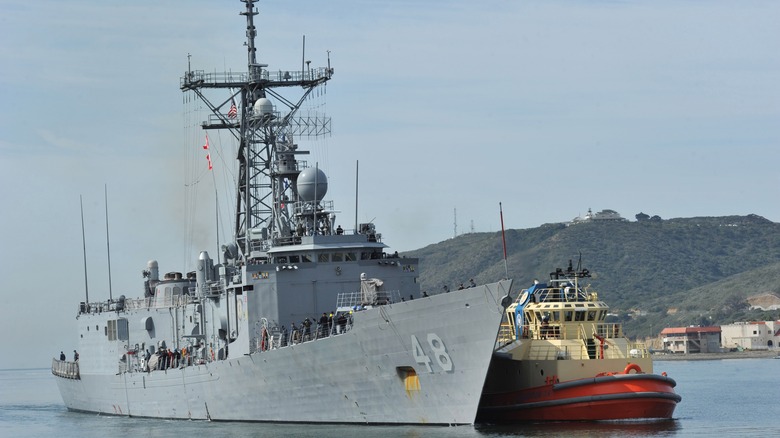
Throughout naval history, the term "frigate" has been applied to various types of ships, encompassing a range of classifications. From traditional sailing vessels with masts to modern guided missile escorts, the concept of a frigate has evolved significantly over time. In the present era, frigates are larger than Corvettes or shore patrol boats but have less armament compared to Destroyers or Cruisers.
During World War II, frigates played a crucial role as an intermediary between Corvettes and Destroyers/Cruisers. Corvettes lacked the necessary resources to operate effectively in extended open-water missions. Frigates were designed to be faster than corvettes while also possessing sufficient armament for anti-submarine operations. Although they did not have the same firepower as Cruisers or Destroyers, their primary objective was to escort and engage vulnerable submarines that were forced to resurface.
The Oliver Hazard Perry-class warship served as the final active service frigate in the United States Navy (USN). However, all active duty ships of this class were decommissioned in 2015. This decision was prompted by the emergence of a new ship class, known as the Littoral Combat Ship (LCS), which assumed the previous roles of frigates. Presently, the USN is exploring a return to the frigate designation through a newly awarded design contract to Fincantieri. This upcoming frigate class is currently referred to as the Constellation class frigate and is expected to enter production and service in the coming years.
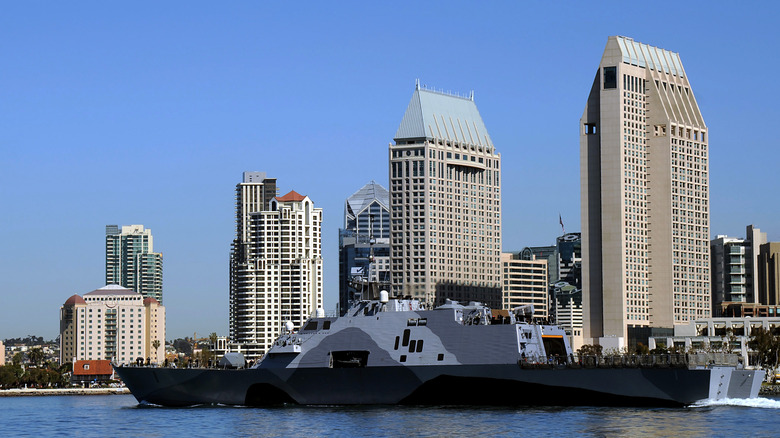
Corvettes are nimble and high-speed vessels frequently employed as coastal patrol boats. While the corvette designation may vary across countries, these ships are typically restricted to operating in close proximity to naval bases and are seldom deployed independently in open waters.
These vessels are renowned for their ability to swiftly respond to threats along a nation's coastlines, making them valuable assets for fast attack and response missions. A significant advantage of corvette-class ships lies in their compact size and exceptional speed. Due to their smaller dimensions, they do not necessitate specialized naval engineering docks like carriers or cruisers. Instead, smaller engineering bays can be utilized, facilitating easier mass production.
Although the United States Navy (USN) does not presently possess any ships specifically designated as corvettes, there are several smaller ship classes that fall within a similar category. Notably, the larger patrol boats operated by the U.S. Coast Guard exhibit characteristics and capabilities akin to corvettes, even if they lack the specific designation. Additionally, the LCS (Littoral Combat Ship) class of vessels served as a temporary replacement for frigates and corvettes.
LCS ships can be classified as corvette-style warships as well. Certain newer models of LCS ships were initially intended to succeed frigates, but following field testing, issues including exceeding budgetary limits and failing to deliver promised capabilities emerged. Consequently, the majority of LCS ships were decommissioned, and all future production of this class has been halted.
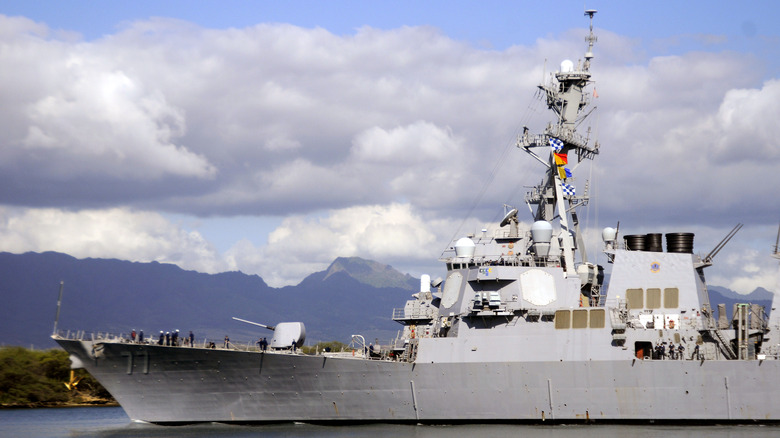
Destroyers played a significant role as fast attack ships during World War II, primarily serving as escort vessels attached to battle groups. With their ability to carry torpedoes and effectively hunt submarines, they were essential assets in naval warfare. However, the landscape of naval tactics and doctrines underwent a substantial transformation with the widespread adoption of modern guided missiles.
In the immediate post-World War II period, destroyers boasted greater speed than Cruisers, although they were comparatively less armored and equipped with less advanced onboard technology. They relied on escort ships for advanced logistics and tracking capabilities but compensated with enhanced firepower, torpedoes, and anti-submarine mines. Their specific missions during World War II necessitated specialized design and functionality. Destroyers were required to be swift to close in on enemy ships and deliver rapid strikes, resulting in thinner armor plating and a focus on ship-killing weaponry like torpedoes.
The advent of guided missiles has largely rendered armor obsolete, as modern missiles possess the capability to penetrate most conventional armor plating. Consequently, the need for heavily armored warships has diminished. This shift has enabled both destroyers and cruisers to be equipped with comparable equipment and armor, thereby aligning their operational capacities. Modern destroyers continue to fulfill a range of functions as escorts. However, many have evolved into mobile missile platforms, armed with guided missile launchpads. This transformation allows them to serve both offensive and defensive roles, significantly augmenting their capabilities in modern naval warfare.
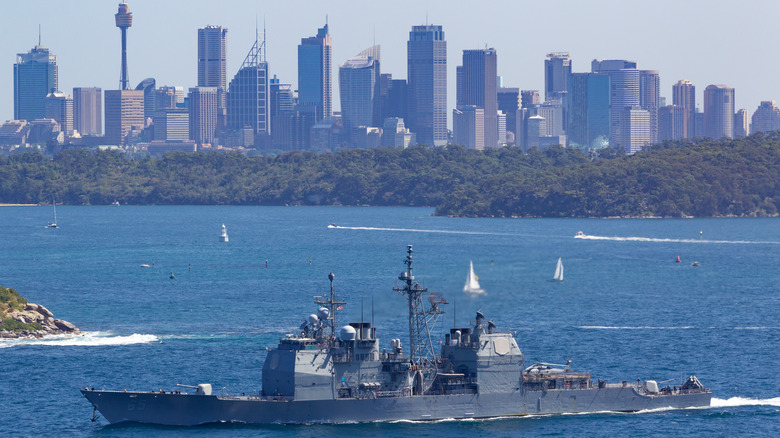
Cruisers are renowned as some of the largest and most heavily armored surface attack ships in modern navies. Their size and armament surpass that of carriers, which primarily rely on aircraft for their weaponry. Following World War II, the line between cruisers and destroyers has blurred significantly. Traditionally, cruisers were characterized by their powerful armor and offensive capabilities. However, with the advent of guided missiles in warfare, heavily armored ships were rendered less relevant. Consequently, cruisers shifted their focus from armor to missile platforms and torpedo launchers. Although today's modern cruisers feature reduced armor, they remain highly lethal vessels. Many of these cruisers are equipped with vertical launch missile systems, a main gun, and various smaller gun placements.
Present-day cruisers serve vital offensive roles on the battlefield. In addition to their potent offensive capabilities, many modern cruisers have advanced electronic countermeasures and defensive systems, often functioning as ballistic missile defense platforms. Despite evolving over time, cruisers maintain their significance within naval fleets. They continue to be optimized for combat effectiveness and multi-role operations, serving as the backbone of numerous navies worldwide.
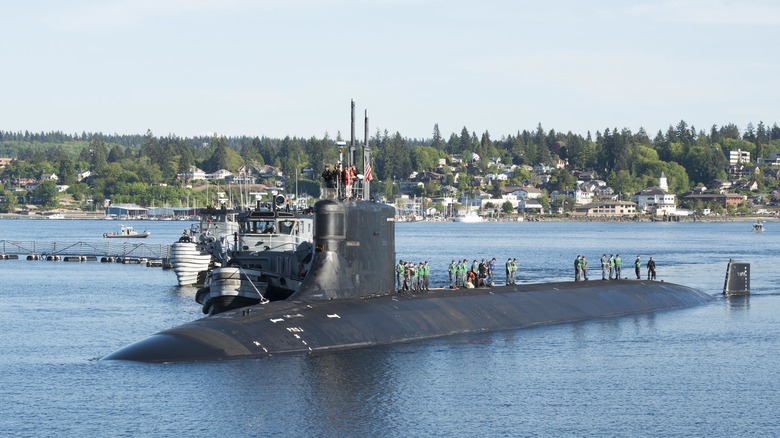
Submarines have undergone notable advancements since World War II, particularly with the integration of nuclear reactors. This revolutionary addition has addressed one of the primary drawbacks of submarines. Previously, diesel-powered submarines had to resurface periodically, rendering them vulnerable to enemy attacks. In contrast, modern nuclear-powered submarines have the capability to generate their own water and oxygen, enabling them to remain submerged for extended periods and operate independently.
Furthermore, the enhanced power supplied by nuclear reactors has facilitated the construction of larger submarines equipped with multiple missile racks. The pioneering efforts of Admiral Hyman George Rickover, overseeing the development of the world's first nuclear submarines, earned him the title of the "Father of the Nuclear Navy." Recognizing their combat potential, Rickover also predicted that submarines could eventually render other ship types obsolete, envisioning a future where all naval missions could be effectively handled by these underwater vessels.
Modern submarines serve a diverse range of roles, including counter surveillance, radar operations, escort duties, asset insertion, and functioning as mobile missile platforms. With their ability to submerge underwater and remain undetected for extended durations, they have become one of the most lethal and efficient warships on the seas today, second only to aircraft carriers. Their versatility and strategic advantages make them indispensable assets within any fleet.
Amphibious warfare ships
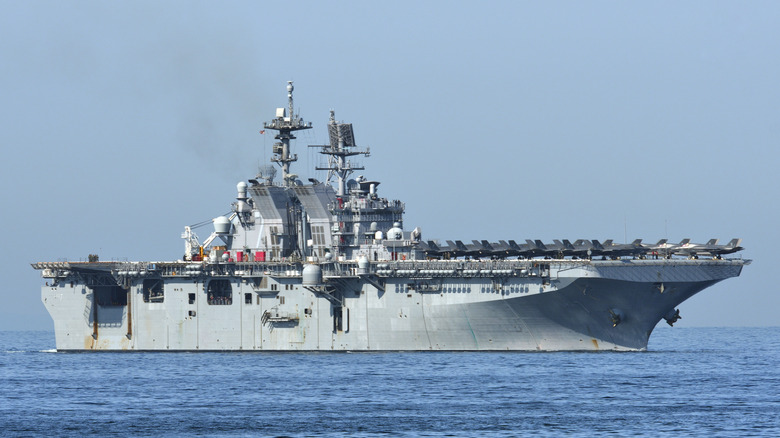
Contrary to the name, Amphibious warfare ships are not all designed to operate on dry land. Their primary purpose is to swiftly transport significant quantities of ground equipment, such as trucks, tanks, and troops, from ships to shore. Amphibious vehicles come in various sizes and configurations, especially the Wasp-class vessels. Although they may resemble carriers due to their impressive size, they are smaller and fulfill different operational roles.
The USS Makin Island and similar Amphibious warfare ships serve as transport and command vessels. During operations, they have the capacity to deliver approximately 1,800 fully equipped ground troops, along with vehicles and any other resources required to establish a base of operations anywhere in the world. The amphibious fleet of the U.S. Navy operates closely in conjunction with the Marines, with their primary objective being the rapid deployment of Marines to any theater of operations. Thanks to their global base coverage and the support of amphibious warships, Marines can establish a beachhead on any coast within a matter of days.
In addition to larger amphibious craft like the Wasp-class ships, there are several smaller landing craft that fall under the amphibious classification. These vessels can be driven onto shore to offload equipment and troops. Examples include the Amphibious Assault Vehicle (AAV), which resembles a tank and can operate on both land and water, and the Land Craft Utility vehicle (LCU), which can be beached and deploy ramps for the quick disembarkation of small vehicles and troops.
Aircraft carriers
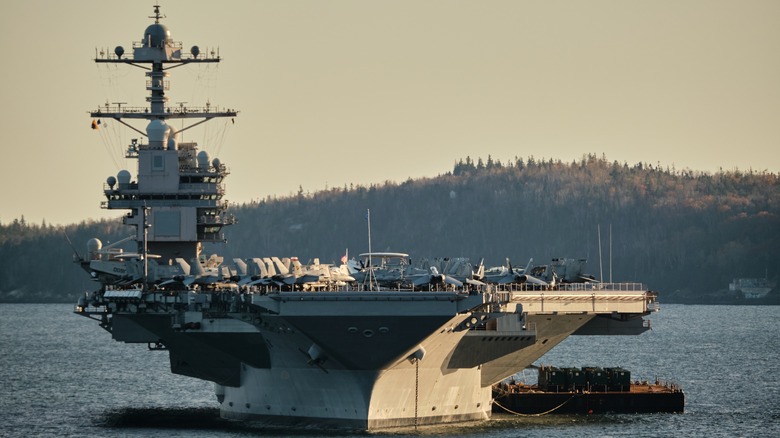
The widespread adaptation of aircraft carriers since World War II has brought about a marked transformation in naval warfare. Alongside the introduction of guided missiles, carriers have rendered battleships completely obsolete, exerting dominance over modern navies ever since. Modern carriers are colossal vessels equipped with cutting-edge technology, resembling small floating cities with a crew capacity of approximately 5,000 personnel. Currently, the world's largest carrier is the newly commissioned Gerald R. Ford class, which replaced the long-standing Nimitz class.
The Gerald R. Ford class represents a pinnacle of Carrier engineering, incorporating advanced electronics and modern technology throughout its construction. Unlike its predecessor, the Nimitz, this class does not rely on outdated internal systems like steam lines. By leveraging these advancements, the carriers can achieve equivalent operational capabilities with approximately 500 fewer crew members.
Aircraft carriers today serve a diverse array of missions such as mobile attack and defense platforms, operating various wing groups. Their mobility also places carriers as rapid response forces, capable of swift deployment. Moreover, carriers are frequently called upon for diplomatic endeavors, as few assets demonstrate diplomacy more prominently than a multi-billion dollar floating weapon platform anchored off the coast of a foreign nation. Carriers also play a vital role in disaster relief and humanitarian missions. Their modern capabilities enable them to provide power to affected areas, provide food for thousands, and produce roughly 200,000 gallons of potable water daily. These capabilities make carriers invaluable assets in addressing crises and delivering aid on a global scale.
Recommended

- Sessa Marine
- Ventura Experience Miami
- Membership Program
Cabin Cruiser Yachts vs. Motor Yachts – What’s the Difference?
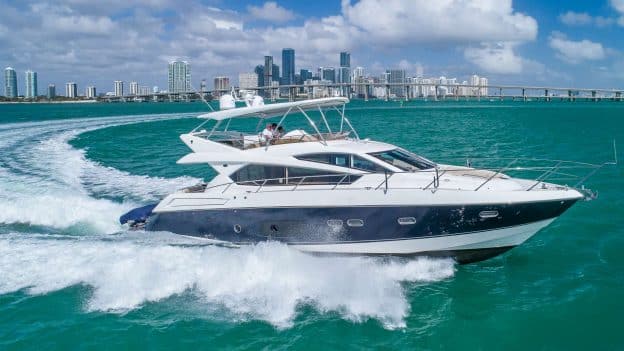
Updated: August 28, 2024
If you’re totally new to the world of yachting , you might be only vaguely aware of the different types of yachts available. We wouldn’t blame you. There’s a lot of overlap between these categories. That can make them seem just a bit arbitrary to the casual or novice boater. However, if you have some idea of what you desire out of your yachting experience, you will want to know the key distinctions between these types of vessels. So, you can make the choice that suits your wants. Here are a couple of major differences between cruiser yachts vs. motor yachts.
*Note*: you’ll likely find boats with different specifications than what you see below that would still be classified as either of these kinds of yachts. That said, we still tried to keep this as general as we could for your convenience. If you have any questions, ask the people who have all the answers at The Advantaged Yacht Charters .
Knot Speed: What does it Mean?
Cruiser yachts are like the sports cars of the boating world. It’s not just the sleek and streamlined shapes or the at-times bold color choices: it’s also how fast they can go. Many cruisers can reach high speeds in the water, reaching 30 knots or even more. The smaller size and angular designs make them more hydrodynamic, which is perfect for adrenaline junkies. If your idea of an excursion is a high-seas adventure, cruiser yachts might be your style.
Of course, for many people, speed isn’t everything. I’m talking about people who picture being on the open seas as a way to kick back and relax, now that they are miles away from the pressures they find on land. Cruiser yachts tend to prioritize chilling out over cutting loose, so they tend to reach the relatively milder high speed of 20 knots. Ironically, this means that motor yachts may be more ideal for “cruising” than the actual cruisers!
How Much Room is there on a Yacht?
Another reason that motor yachts can’t go as fast as other kinds of yachts is also a major part of their appeal: they’re significantly larger. These kinds of boats tend to come with multiple heads and staterooms, but more space also means more amenities. You might find bars, spaces for eating, and lounging areas aboard a motor yacht. Do you remember when we mentioned earlier that cruiser yachts are like sports cars? It wouldn’t be too far off to say that motor yachts are the boating equivalent of stretch limos.
Cruiser yachts typically have less room for such features and fewer cabins. Still, what it lacks on the inside is made up for by the emphasis on what is outside; you may find more outdoor space on a cruiser, so you can enjoy that fresh sea air. Motor yachts may be a better vessel for a fancy dinner party. But, the cruiser yacht may be better suited for those who prefer bringing a cooler, grilling up, and casting out a fishing line with a few buds.
Contact The Advantaged Yacht Charter
Of course, no one type of boat is inherently better than the other. It’s all subjective and depends on your own taste and interests. This means that in the debate over cruiser yachts vs. motor yachts, there is only one clear-cut winner: you. The Advantaged Yacht Charter s can help you make that decision and get the sailing experience you’ll love most. Check out our selection of cruiser yachts and motor yachts , and take a look at our many other options as well.

Houseboat Vs Yacht (Differences & Comparison)

August 30, 2022

For most people, a houseboat and a yacht refer to the same thing. But is that the case? This houseboat vs. yacht comparison guide has the answer.
If you are looking to spend some of your time living on the water, you can either purchase a houseboat or a yacht. After all, they are the same thing, right? Not exactly. Houseboats are yachts are two different water vessels.
A houseboat is more of a floating house. It’s specifically built for permanent residence in water. And while it can move around, most houseboats spend the majority of their time moored to a port. Yachts, on the other hand, are designed for leisurely water activities like racing and vacations.
In this houseboat vs. yacht comparison guide, we will take a closer look at how these two water vessels compare. We will explore their designs, the different types available, their floor plans, and their pricing. And by the time you finish reading this guide, you will have a clear idea of the differences between a houseboat and a yacht. Also, this guide will help you to know the right choice for your needs.
We aim to provide our readers with informative, well-researched, and trustworthy content. And this is made possible thanks to our ever-dependable team, composed of respected journalists, experienced researchers and various other experts, drawn from different specializations. So, whenever you come across any type of content piece on our site, you can rest assured that the information you are getting is credible.
Table of contents
One of the main differences between a houseboat and a yacht is their design or appearance. If you take a closer look at a houseboat, you will notice it resembles something that looks like a floating home. And this explains why it’s called a houseboat. It’s a combination of a small house and a boat, thus the name.
A yacht, on the other hand, looks like an ordinary boat. Hence, it’s almost impossible to confuse the two, in terms of appearance, since they are considerably different.
A notable difference in their appearance is the hull. Considering that different water vessels come with different types of hulls, this is also the case with these two. For a houseboat, you will notice that it has a flat bottom hull. The flat bottom hull is designed to enhance its stability in the water since it spends the majority of its time docked alongside a pier, berth, or slip.
On the other hand, yachts come with V-shaped hulls. The V-shaped hull is designed to enhance the vessel’s agility and speed. Unlike houseboats, yachts spend most of their time moving around on the water. And this explains why they come with this type of hull design.
So, if you come across a water vessel that has a flat-shaped hull, it’s highly likely you will be looking at a houseboat. On the other hand, if it has a V-shaped hull, the chances are it’s a yacht or other similar water vessels built for agility and speed.
But, it’s also worth mentioning that some high-performance boats like tournament waterski boats also have flat-bottomed hulls. This hull design is to enable them to skim smoothly on the water surface.
Similar to other water vessels, houseboats and yachts come in different types, shapes and sizes. So, if you are looking to purchase any of these two water vessels, here are the different available types.
There are two main types of houseboats. These are static or non-cruising houseboats and bluewater or cruising houseboats. Each of these two types is built for a specific purpose and utilization.
Static Houseboats
As their name suggests, static households are not built for moving around. Most of the time, they are anchored or moored to a designated spot, which may be a dock or marina. Static houseboats are the most popular out there.
Non-cruising houseboats come equipped with almost all the modern conveniences that you would find in a normal house. However, these boats like propelling mechanisms, meaning you can’t move around in them.
Cruising Houseboats
A cruising houseboat is almost similar to a static houseboat, in terms of design and furnishings. But, it comes with a propelling mechanism, which may be a sail or engine. These are designed for individuals that want to travel around in a floating house. They are mainly built for vacationing.
But, as much as you can move around in a cruising houseboat, you can’t operate it on open or high oceanic seas, meaning you can only cruise with it on small water bodies. Cruising houseboats are not as popular as their static counterparts are.
While there are two main types of houseboats, you will come across numerous types on the market, branching from these two basic ones. Some of the different kinds of houseboats that you will find on the market include:
Pontoons are flat-looking cruising houseboats, mainly made from materials like wood, marine-grade aluminum, plastic, steel or fiberglass. They are mainly designed for vacationers. Pontoons are popular among houseboat lovers because of their practicality, stability and affordable prices. Also, they are easy and safe to operate and their maintenance costs are minimal.
Barges are large houseboats, which can be moved around or permanently anchored at the bay. Barges are the most popular houseboat styles due to their generous amounts of storage space. A conventional barge can accommodate approximately 10 people, making them ideal for families.
Trailerable
Trailerables are houseboats with a narrow and long design. Their narrow design makes them ideal for cruising small river systems and canals. Its name comes from the fact that you can tow it with a vehicle and move it around since it’s lightweight. Trailerables are smaller than the majority of other houseboats. But, if you only wish to spend a short amount of your time in the water, then a Trailerable will be the ideal vessel.
Floating Home
A floating home is a non-cruising houseboat, ideal for people who don’t want to cruise around in their boats. It’s a great retirement home for someone who wants to spend the majority of their time staying on the water. Floating homes are among the cheapest houseboats. They are affordable to build and easy to maintain.
River Houseboat
If you are planning to be living permanently on water, then you should consider building or buying a river houseboat. Houseboats are usually made of fiberglass. Also, they are customizable, meaning you can have them built according to your specifications. River houseboats and you can furnish them with various conveniences.
Full hulls are popular houseboats that you will mainly find in the U.S. Full hulls come with a spacious interior, meaning they can accommodate several people. And thanks to their design, they have higher buoyancy, meaning they can handle rougher waters better than most other types of houseboats.
Just like houseboats, yachts come in different types. Yachts can be categorized based on size and purpose, among others. Let’s take a closer look at the different yachts that fall under each of these categories.
When it comes to size, you can buy a smaller yacht, medium-size yacht, mega yacht or a super yacht. As you may expect, the bigger the yacht, the more it’s going to cost you to buy and maintain.
Smaller Yachts
Smaller yachts range between 10 meters to 20 meters. The majority of smaller yachts are usually privately owned. They are mainly used for water recreational activities like water sports or cruising. These yachts can be sail-driven, motor-driven or a combination of both.
Medium-sized Yachts
Medium-size yachts range from around 20 meters to 30 meters. They are ideal for tourist groups or bigger families. Medium-sized yachts may have a small crew for operating and maintaining them.
Super Yachts
These yachts measure around 30 to 50 meters long. They come with several nice features like sky lounges, Jacuzzis, bars and dining rooms. They can be sail-driven or motor-driven. Superyachts also have a professional crew for serving the people on board.
Mega Yachts
These are the biggest yachts currently. They are usually owned by super-rich individuals since they are quite costly. Some are also owned by organizations that offer water tourism. Megayachts measure around 50 meters long or even more. Similar to superyachts, mega yachts also have a dedicated crew that works round the clock. They are also adequately outfitted with numerous luxurious facilities and amenities like cafeterias, swimming pools, suite rooms, restaurants, gyms, conference banquets and pubs, just to name a few.
Different yachts are built for different purposes and target markets. Some of the different yachts that fall under this category include:
Cruiser Yachts
As their name suggests, these yachts are mainly built for moving around or vacationing. Cruiser yachts come in different types and sizes. They are built for long-distance trips. Luxury yachts usually fall under this category.
Sports Cruisers
These yachts are built for short fast traps and water sports activities. They are quite compact and smaller in size than most of the other yachts. And as you may expect, their accommodation spaces are also limited.
Fishing Yachts
Fishing yachts are purposely built for fishing and leisurely activities. They come with adequate space for storing fishing gear. These yachts come with open decks, to make fishing easier. While you can use them in various fishing spots, they are not allowed for deep-sea fishing.
Expedition Yachts
If you love exploring or touring using water vessels, then expedition yachts are the perfect fit for you. They are built for long-distance water trips and vacations. Expedition yachts are given permission to explore remote and uncharted locations, which is usually not the case with cruiser yachts.
Trawler Yachts
Trawler yachts are also fishing vessels. However, they are built for large-scale or commercial fishing. But unlike ordinary fishing yachts, trawler yachts come with some comforts like sleeping bunks, since the crew may spend several months fishing.
Comfort and Livability
You can live on both a houseboat and a yacht. However, yachts tend to be more expensive compared to houseboats per square footage. Therefore, for the average person, a houseboat provides the most practical, affordable and convenient option.
Houseboat Floor Plan
The floor plan of a houseboat resembles that of a conventional house. As for the yacht, its floor plan resembles that of a conventional boat. For a houseboat, there will be a living room, bathroom, bedrooms and a fully-equipped kitchen, meaning it accommodate an entire family.
Considering that houseboats have a shape that is almost similar to that of a residential home, you will notice that their layouts are also similar. So, in case you live in an area where property prices are too high, you can simply opt for a houseboat. You will have almost similar living quarters at an affordable cost.
Yacht Floor Plan
As earlier mentioned, yachts are mainly designed for leisure activities like water sports, boat parties, fishing and weekend getaways. Therefore, they are mainly designed for vacationing and not long-term living in the water.
As for the floor plan, its layout will be similar to that of a boat. However, a yacht will come with more luxury features and comforts compared to a conventional boat. For instance, most speedboats don’t have indoor living spaces. They usually come with a captain’s seat and a bench. Some may also have a low table, but this feature is quite rare in speedboats.
A yacht, on the other hand, will have several luxurious features, which you can’t find in a speedboat. The main issue with yachts is that interior space is quite limited. While it may appear posh and luxurious, it lacks enough space, meaning it’s not ideal for long-term living on the water. Also, yachts tend to have limited headroom, compared to houseboats.
When you compare the two, you will conclude that a houseboat will be cheaper per square footage, compared to a yacht. If you browse the prices for these two water vessels of comparable size, you will notice that a yacht will cost you considerably more than a houseboat.
Wrapping It Up
A houseboat and a yacht are similar in various ways. Both are built for people that want to spend time in the water. But, they also have considerable differences. A houseboat is more of a floating house, designed for those who want to establish a permanent residence on water. Yachts, on the other hand, are ideal for recreational purposes. So, if you are looking to settle permanently close to a water body, then a houseboat will be the ideal choice. On the other hand, if you are planning on going for a vacation or other water-based recreational activities, then a small yacht will serve you well.

Best Houseboat Fishing Trips

Best Houseboat Food

Best Houseboats For The Money

Best Houseboat Financing
This article may contain affiliate links where we earn a commission from qualifying purchases. The images and content on this page may be created by, or with the assistance of, artificial intelligence, and should be used for entertainment and informational purposes only.
About THE AUTHOR
Brian Samson
I have a deep love of houseboating and the life-changing experiences houseboating has brought into my life. I’ve been going to Lake Powell on our family’s houseboat for over 30 years and have made many great memories, first as a child and now as a parent. My family has a passion for helping others have similar fun, safe experiences on their houseboat.
Trending Now

Tips To Living On A Boat In Key West

Best Used Houseboats

Best Boats For Caribbean Island Hopping

Best Houseboat Marinas
After spending over 30 years on houseboats, the memories and knowledge we've gained will never fade. Learn from our experiences here on LakeWizard. You can read more about us and our team, here .
©2024 LakeWizard. All rights reserved.
You can email us at [email protected]
LakeWizard.com is a participant in the Amazon Services LLC Associates Program, an affiliate advertising program designed to provide a means for sites to earn advertising fees by advertising and linking to Amazon. This site also participates in other affiliate programs including but not limited to ShareASale, CJ, and ClickBank, and is compensated for referring traffic and business to these companies.

Cabin Cruiser: The Ultimate Guide (2024)
Passengers : Maximum 10 Length : 20-40 Feet Trailerable : Yes Best for : Day Cruising & Overnight Trips Price Range : $100,000-$500,000 Propulsion : 2+ Outboard Engines
Many boaters want the versatility and passenger capacity of a pontoon boat, the amenities of a houseboat or yacht, with the ability to take on bigger waters or coastal environments. If you find yourself wanting a very versatile and comfortable vessel, a cabin cruiser might just be perfect for you.
What is a Cabin Cruiser?
Types of cabin cruisers, cabin cruiser sizes, benefits of cabin cruisers, drawbacks of cabin cruisers, cabin cruiser prices, cabin cruiser ownership costs, great activities for cabin cruisers.
- Popular Cabin Cruiser Brands
History of Cabin Cruisers
Cabin cruiser alternatives.
A cabin cruiser is a boat that can take the whole family fishing or tubing, while also providing many of the comforts found in larger vessels, like areas to sleep and cook.
The average cabin cruiser boat will be between 20 and 40 feet long and have the capacity and amenities to support outings that are longer than just a day. Even the smallest and most basic cabin cruisers will have room for several passengers, one or more staterooms, a head, and at least a small galley area.
Cabin cruisers are great for boaters that are going to be using their boats for a wide variety of activities, including those that may have them on the water for several days at a time.
They can be used for fishing just as easily as they can be used to pull the kids on their tubes or skis. After a long day of fun cruising, you don’t have to cut the day short, head inside to make a quick dinner, and enjoy it in the comfort of the private bedroom.
Cabin Cruiser vs. Cuddy Cabin vs. Yacht
While there are a lot of similarities between cabin cruisers and yachts, the differences that separate cruisers and yachts from cuddy cabins are quite stark.
Cabin cruisers are far easier to transport than yachts since all except the largest and most extravagant luxury cabin cruisers are trailerable. Cabin cruisers are also much easier to operate by a single person.
Most yachts will not be able to be transported by the average owner, and many of them will require a professional crew to safely operate. They are incredibly luxurious and are generally much longer than either cabin cruisers or cuddy cabins.
Cuddy cabins, on the other hand, have highly stripped-down cabins compared to yachts and cruisers. While cuddys do have a cabin, it is small and minimalist, and will not include a head or galley. The most you can expect in a cuddy cabin is a place for two adults to sleep, and perhaps a freshwater sink. Of the three types, they will be the cheapest in nearly every scenario.
While cabin boats might feel like a very simple designation for any boat with a cabin, there are actually several different types of cabin cruisers that you may encounter if you are currently in the market. Generally separated by their design and purpose, three popular cabin cruiser variations are below.
Sport Fishing Cabin Cruisers
These are usually the cabin cruiser boats that people picture in their heads. They are generally a very deep v hulled boat, with ample deck space and a cabin that houses many of the features and amenities of the boats. They are usually outfitted with between 2 and 4 powerful engines.
They differ from other boats with cabins by being equipped with features and gear that are central to fishing, like rod mounts, livewells, and bait freezers. If you fish for larger sport fish in coastal waters, like tuna or swordfish, a sport fishing cabin cruiser will likely be the best type for you.
Downeast Cabin Cruisers
Downeast cabin cruisers are a type of boat with sleeping quarters that evolved from the lobster fishing vessels of the New England coastal waters. They are more heavily outfitted for fishing than even sport fishing cabin cruisers, and may also have specialized equipment like trap hauling cranes or extra heavy downrigging equipment.
Downeast cabin cruisers will combine the comforts of home, with the ability to remain at sea for several days or even continuously. They can be great sleeper boats for day trips, weekend outings, overnights, and long-term leisure cruising.
Canal Cabin Cruisers
These unique vessels are not often seen in the US but are a staple of UK canals and riverways. They are small cabin cruiser boats that are similar to the downeast cabin cruiser shape, but having a flatter hull to allow for navigation in much calmer and shallower water.
A benefit to these types of cabin boats is that they are more suited to long-term cruising, very similar in nature to a houseboat. Although, since they are designed for river and canal navigation they aren’t suited to rougher water. They are quite rare in the US, even in the used boat market.
When you’re browsing boats and trying to figure out what cabin cruiser length may be right for you, you are probably looking at a range of more than 30 feet. The smallest ones you will see are going to be just under 20 feet, while the longest will be 55 feet. They can be Class 1, 2, or 3 vessels.
The size and weight of your boat are going to determine whether or not you have a trailerable cabin cruiser, or if you may have to seek professional help when transporting your boat out of water. Generally speaking, if the boat is 8 feet 6 inches wide or less, and under 12 feet high, it will be legal to tow through most states yourself.
Cabin cruisers have one of the largest size ranges for personal leisure powerboats that can be operated by one person. Most cabin cruiser brands will produce boat lines that are between 17 feet long and 55 feet long, though the great majority of cabin cruisers will occupy the modest range of 20 to 40 feet in length.
Cabin cruisers are most often used in coastal waterways for leisure cruising, fishing, and family entertainment. Some are small enough to be transported and used effectively on smaller rivers and lakes, however, the expense of transporting longer boats may be prohibitive.
If the boat is between 16 feet and less than 26 feet it is a Class 1 vessel. If it measures 26 feet to less than 40 feet it qualifies as a Class 2. Class 3 cabin cruisers will measure more than 40 feet but less than 65 feet. The class will dictate the equipment and safety gear that must be present onboard.
The weight of your cabin cruiser will vary depending on size, though not as much as you may think. The average 25-foot long cabin cruiser will tip the scales at about 5,500 pounds, with an average of another 200 pounds for each linear foot beyond that.
The weight will be very important for you to understand since it will directly affect your ability to trailer, tow, transport, and ultimately launch your boat. In many situations, the vehicle is able to tow the boat and trailer, but the weight of both at once may end up exceeding weight limitations for local roads or bridges.
With the average dry weight of the boat being above 5,000 pounds and sometimes 8,000 or more, the dry weight of your boat and trailer should be within the towing capacity of your vehicle. In situations like this, you will certainly need a truck, as tow-capable cars or SUVs will not be able to safely tow.
There are a ton of cabin cruiser benefits that can be pointed out by those who prefer them. To start, they often eliminate the need for shore power when out at sea, since many of the larger cabin cruisers will have dedicated generators that will run accessories like fridge/freezer, lights, entertainment devices, and more.
The size of cabin cruisers is also considered to be one of their benefits since they have plenty of room for activities. Most have a swim platform, fully enclosed or optionally enclosed helm, and a comfort level in rougher waters that is the envy of smaller vessels.
So many people prefer cabin cruisers over dedicated-purpose boats because of the options and customizability available through the manufacturer, and the overall versatility. Since you don’t have to get a specific subtype, you can often choose a model that will allow you to fish, cruise, and even go island-hopping.
One of the things that some people often have to shop around for, is finding a cabin cruiser with the ideal number of seats for the passenger loads they plan on carrying.
Even though you may find one that has the passenger capacity you need, there may not be enough space for passengers to sit without having to go below deck.
If you find yourself in this situation, simply moving up to the next length option often provides an additional 2-4 seats. Sometimes, even this isn’t enough extra room, in which case you may be better suited to looking at smaller yachts.
Navigating cabin cruiser prices can feel a bit overwhelming at times since there are so many potential makes and models. We’ve simplified it a bit for you, below you’ll find ballpark estimates for what you should expect to spend.
| Entry | 20 feet | $20,000 | $40,000 | |
| Entry | 22 feet | $55,000 | $70,000 | |
| Entry | 25 feet | $50,000 | $100,000 | |
| Premium | 30 feet | $70,000 | $150,000 | |
| Premium | 33 feet | $180,000 | $290,000 | |
| Premium | 40 feet | $700,000 | $900,000 |
New Cabin Cruiser Prices
Some newer boaters may be put off by the cabin cruiser cost associated with a new vessel. In most cases, boaters looking for an average cabin cruiser can get on the water for about $70,000. Most new boats will be in the $50,000-$100,000 range, with luxury models going up from there.
With new cabin cruiser models, all of your mechanical components, like the engine, bilge pump, steering system, electrical system, and so on, are in the best condition they will ever be in. Often there are warranties as well. This drives your ongoing cost of ownership down for several seasons since there likely won’t be any service needed beyond routine maintenance.
In many cases, the prospective owner will be able to build their boat online to suit their needs, cutting down on the list of gear or accessories needed later. Often with new boats, the manufacturer or dealer will have packages available to outfit the boat with all items required for full passenger load.
Used Cabin Cruiser Prices
Many potential cabin cruiser buyers look for used boats. This can sometimes be a very smart way to get boats which are frequently relatively expensive for much less than they would ordinarily pay, less than half in many situations.
Used cabin cruisers can be found for as little as $7,000 for models only a few years old, ranging up to around $30,000. This makes them a much better value than other used boats. A downside to this is that you will often need to spend a little more to have them outfitted with the electronics and other accessories that you want.
With the benefits of lower purchase costs, however, cabin cruiser ownership costs often rise with the purchase of a used boat. Depending on the condition of the boat and the maintenance history of the previous owner or owners, you may be getting a great deal or taking on a considerable expense.
When planning on buying a cabin cruiser, you should understand and be prepared for the ongoing expense of boat ownership. In some ways, the ownership costs for a boat with a sleeping cabin can significantly outstrip those of boats without cabins. Plan on 10%-15% of the cost of your vessel in annual maintenance.
You will need to take into account recurring expenses such as boat insurance, which you will need to maintain whether you’re on the water or not. You will also need to plan on mechanical maintenance for the engine, steering system, and the cost of supplies to clean your boat after use.
If you are in an area where you will have your boat in storage for a part of the year, you will need to consider that cost. If you are in an area that allows for year-long boating, your expense will be monthly or annual boat slip and marina security fees. Here’s an average yearly breakdown for a modest $40,000 cabin cruiser with a 6 month boating season:
- Licenses & Insurance: $400
- Boater Education: $100
- Maintenance: $4,000
- Fuel: $6,000
- Slip: $1,500
- Equipment: $500-$1000
Your cabin cruiser will be the perfect vacation destination since it essentially functions as a seaworthy hotel room. Many people love to just cruise from place to place, enjoying coastal tranquility. Others use them for sport fishing, chasing freshwater trophies, or saltwater bounty like tuna. They work perfectly for local day trips as well as distant overnights.
A large portion of cabin cruiser owners enjoys having a place where they can take the whole family to both stay and play. Since the best part about a cabin cruiser is having the means and space to prepare meals and safely sleep, your outings are no longer limited by daylight hours or your next hot meal.
The versatility to go wherever and do whatever the tribe wants, without having to cut the fun short to have dinner or spend the night, is one of the greatest feelings of all.
Popular Cabin Cruiser Brands
There are a ton of manufacturers out there that make some version of a boat with a cabin, and many of them only have a limited history of making or selling cabin cruisers.
There are some brands, however, that have been around and are well-known and well-respected in the boating world. There are some newer brands that have definitely made a name for themselves in a short time in the industry.
The most popular brands of cabin cruisers include:
- Chris-Craft
- Grand Banks
- Tiara Sport
While the idea of a boat with a cabin is obviously not a new one, many boaters wonder how the modern cabin cruiser boat type came about. They gained a lot of steam during the 1950s, but their official design and production history goes back even further.
As early as the 1920s and into the 1930s, boatbuilders Elco Motor Yachts and Consolidated more or less created the entire cabin cruiser boat type. While sailboats would remain the more popular cabin boats until the middle of the century when new materials developed during WWII made their way into the consumer boat industry.
Once the boats became more cost-effective to manufacture, it drove the prices down. This allowed those who weren’t specifically “wealthy” to begin to enjoy a boating lifestyle. This continued to evolve into the consumer boating industry you know today.
If you were looking for alternatives to a cabin cruiser, while retaining some similar level of versatility or functionality, there may be a few potential options.
If you find you don’t necessarily need the cabin cruiser interior, but enjoy its various range of uses, you may find that a deck boat allows you to do many of the same things. You will be able to cruise, fish, and partake in various water sports and leisure activities.
Another alternative would be a smaller yacht, which would offer similar amenities while providing even more room for guests or activities.
Yachts will often be slightly longer than cabin cruisers, however, so be aware that your annual cost of ownership would increase as you would likely need a more expensive slip than for a cabin cruiser.
What is the difference between a cabin cruiser and a yacht?
The main difference in a cabin cruiser is that while a cabin cruiser often has similar amenities, its size allows it to be more easily operated by one person, while a yacht will generally require a crew.
Can a cabin cruiser go to sea?
Cabin cruisers are surprisingly capable out at sea and are able to handle some rougher water due to their size, hull shape, and overall stability.
How much does a cabin cruiser cost?
Like all larger cabin boats, the cost of a cabin cruiser can vary wildly. Basic models bought new, will generally cost at least $100,000 and sometimes more than a million.
Do cabin cruisers have bathrooms?
Any cabin cruiser should also be equipped with a bathroom, also called a “head”. They may not be “en suite”, but they should be present.
How fast do cabin cruisers go?
Depending on the engine and the boat specifics, it is not uncommon to see cabin cruisers that are able to reach 60 knots (69mph) or more.
How to winterize a cabin cruiser?
They require much of the same care that other boats will need, such as prepping the engine for disuse, service the filters and separators, stabilizing the fuel system, and prep the plumbing.

Robert Owens is the Chief of Content of Quicknav. Robert has been boating for over ten years and loves to share his experience on the water. His first boat was a dirt-cheap moderately beat up 2003 Bayliner 175, where he learned a tremendous amount about trailering, launching, docking, operating, and maintaining. He currently owns a Cruiser Yacht and is eyeing a sailboat.
Similar Posts
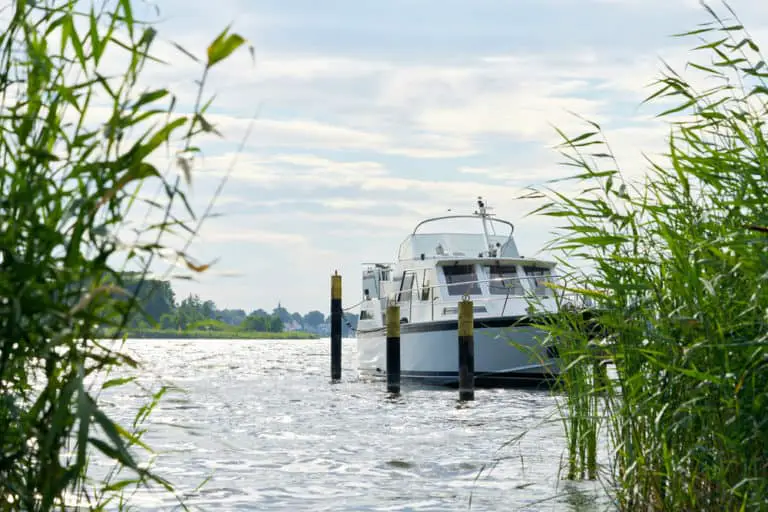
Do You Need a License to Drive a Boat in 2024? (U.S. & Canada)
It’s getting to be prime vacationing time, and if you’re traveling to enjoy some time on the water, you will…
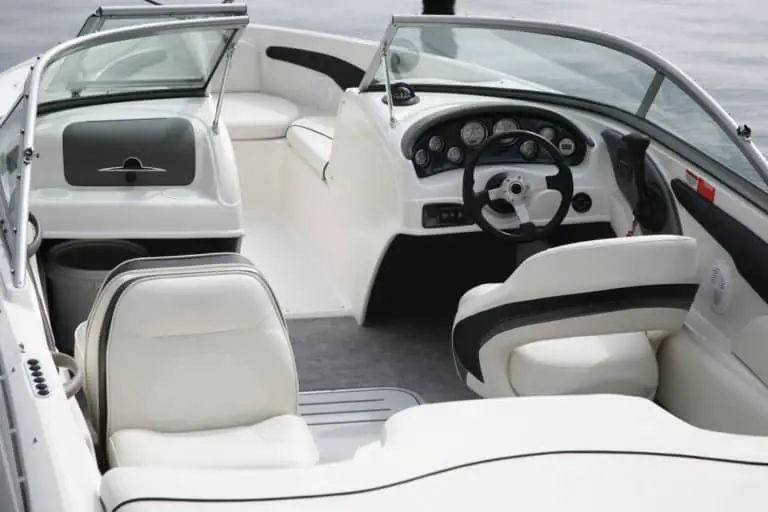
How to Clean Boat Seats? (a Practical Guide)
So you’ve bought your first boat and while you think you can master most of it with ease, you keep…
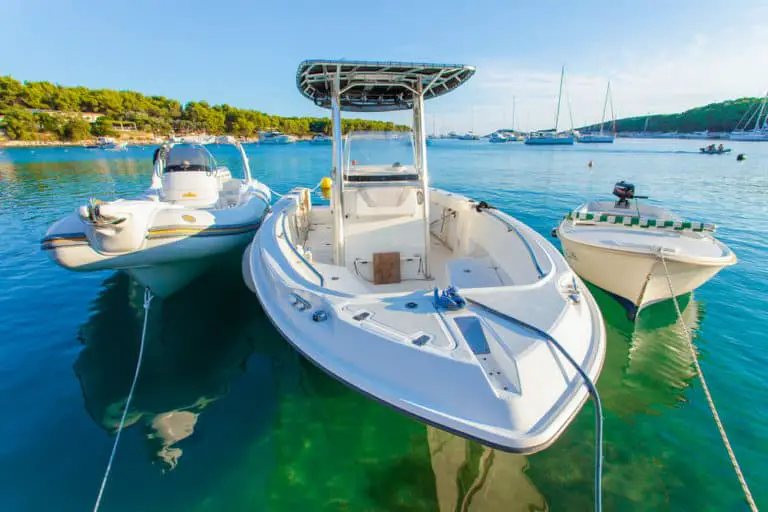

Types of Boats: The Ultimate Guide (2024)
When taking into consideration the different types of boats that navigate the fresh and saltwater bodies of the Earth, the…
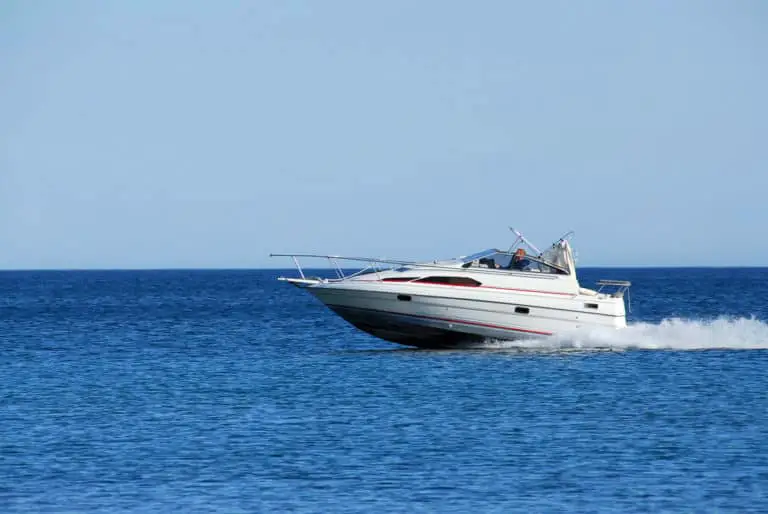
Boating Rules and Etiquette On the Water (2024)
Understanding the basic boating rules that are needed for the safe operation of a vessel, whether inland or out at…
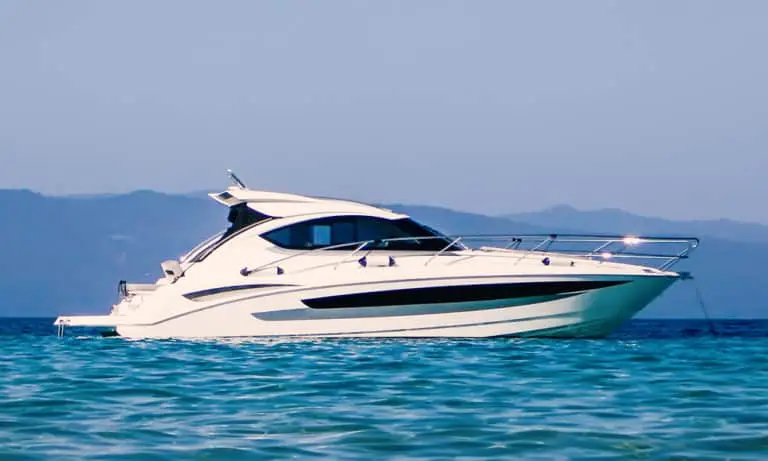
Boating Statistics in 2024 (incl. Covid & Millennials)
It’s no secret that Americans love boating as boating and fishing are the largest outdoor recreation activities in the U.S….

Glossary of GPS Terms in 2024 (The Definitive List)
Learning about global positioning systems or GPS can lead you down a rabbit hole of technical material, many dealing with…
- 2024 BOAT BUYERS GUIDE
- Email Newsletters
- Boat of the Year
- 2024 Freshwater Boat and Gear Buyers Guide
- 2024 Boat Buyers Guide
- 2024 Water Sports Boat Buyers Guide
- 2024 Pontoon Boat Buyers Guide
- Cruising Boats
- Pontoon Boats
- Fishing Boats
- Personal Watercraft
- Water Sports
- Boat Walkthroughs
- What To Look For
- Watersports Favorites Spring 2022
- Boating Lab
- Boating Safety
- Ultimate Boating Giveaway

Comparing Cruisers
- By Jeff Hemmel
- Updated: October 20, 2017
Day boating may be fun, but cruising overflows with potential. If you love it, pretty soon you’ll get what boaters call “two-foot-itis ”; it’s the need for just a little bigger boat. In fact, boat sellers love this little bug and often count on it for their next sale. Here is what three to five more feet get you, so just maybe you can buy the boat of your dreams the first time.
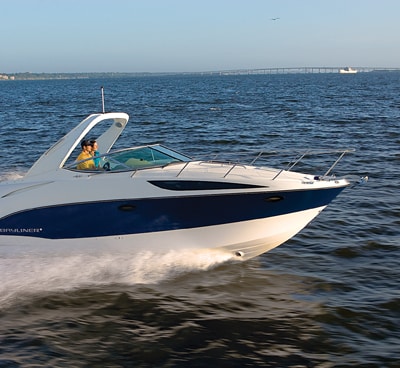
28 Feet: Bayliner 285 SB Cruising really begins with boats in the 28-foot range. They’re still small enough to be towed or stored on your property, yet big enough to overnight aboard. Bayliner’s 285 pairs a slimmed-down forward berth with a convertible Corian-tabled dinette and makes the midcabin berth an actual stateroom, meaning a real bulkhead and door, not just a curtain. That brings sleeping capacity to six, although in this size range, a couple (and maybe the kids) would truly be most comfortable for a weekend. The same holds true for living amenities, such as freshwater capacity. Cruisers in the 28-foot range offer adequate capacity for short trips, but generally not extended stays. The Bayliner 285 SB will tote 28 gallons of water.
Contact: Bayliner Knoxville, Tennessee; 360- 435-8957; bayliner.com
Class Advantage: Many stay within a beam of 8 feet 6 inches, and a 28-foot cruiser is still small enough to tow with a full-size vehicle.
Specs LOA: 28’7″ Beam: 9’11” Displacement (lb.): 8,056 Fuel Capacity: 89 gal. Max Horsepower: 380 Range at Cruising Speed: 142 nm Berths: 6
Price: $96,305 (with MerCruiser 350 Mag)
Gotta Have: Swim platform extension adds welcomed socializing space.
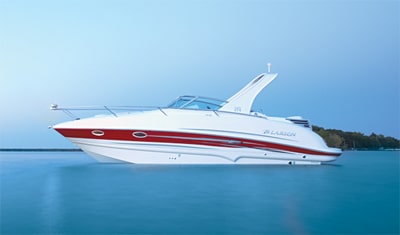
Another Option…Larson Cabrio 274 Larson opts for a more traditional V-berth, and the cozier midcabin berth is best left to the kids. The adults will likely enjoy a more comfortable night’s sleep forward. larsonboats.com
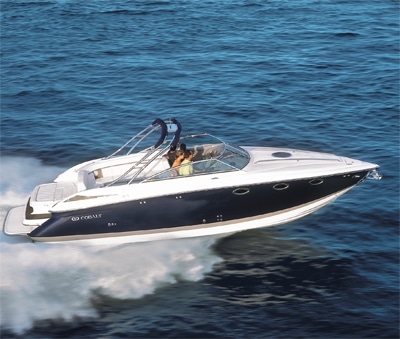
32 Feet: Cobalt 323 Boats in the 32-foot range, like the Cobalt 323, step up to twin engines, but they’re still mostly the familiar gasoline stern-drives, which allow you to navigate shallower waters. Twin engines make for easier docking, which is good, since a 32-footer is beyond reasonable towing size. Additional footage provides real space. Some manufacturers use it to allow a small family to weekend. Cobalt chose to make the ultimate day boat. Its expansive, single-level cockpit — featuring plush wraparound seating and a six-speaker stereo system — is complemented by a couple-friendly double berth, head and minimal galley below. Step aft and you’ve got a large swim platform, perfect for hot summer days. The 32-foot cruiser class offers excellent levels of versatility.
Contact: Cobalt Boats Neodesha, Kansas; 800-468-5764; cobaltboats.com
Class Advantage: While actual sleeping capacity isn’t much more than on a 28-footer, a larger cockpit and cabin provide more daytime fun for a larger crew.
Specs LOA: 32’10” (w/o swim platform) Beam: 10’7″ Displacement (lb.): 12,300 Fuel Capacity: 174 gal. Max Horsepower: 860 Range at Cruising Speed: 217 nm Berths: 2
Price: $266,577 (with twin MerCruiser 496 Mag MPI)
Gotta Have: Bimini enclosure provides comfort and protection, rain or shine.
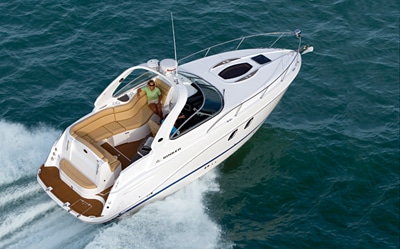
Another Option…Rinker 310 Express Cruiser Offers some nice touches, including an aft cockpit lounge that converts to a sun pad, an optional cockpit grill and a skylight that opens up the cabin. rinkerboats.com
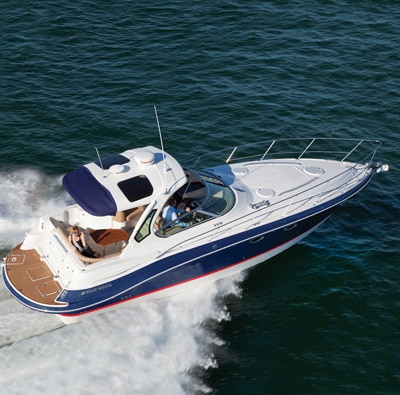
37 Feet: Four Winns V375 Cast off in a 37-foot boat, like the Four Winns V375, and you’ll be less subject to rough seas, thanks to 15,000-plus pounds of displacement and a deep-V hull, which smooths the ride. You can still get the familiar stern-drives in this size range, although it is on the cusp of the size for which pod-drives and joystick controls become common. Roominess continues to increase in the 37-foot class. Check out the expansive helm area and the adjacent cockpit in the V375. It is equipped with a refreshment center that includes a sink and a choice of either a refrigerator or ice maker and is housed under a cabana hardtop with full enclosure. The V375’s standard deck plan offers curtained enclosures. Step up to optional bulkheaded staterooms for added privacy.
Contact: Four Winns Cadillac, Michigan; 231- 775-1351; fourwinns.com
Class Advantage: Say goodbye to cramped berths. In this size range, the midcabin berth becomes a true second cabin.
Specs: LOA: 37’0″ Beam: 12’0″ Displacement (lb.): 16,500 Fuel Capacity: 230 gal. Max Horsepower: 640 Range at Cruising Speed: 210 nm Berths: 6
Price: $336,476 (with twin Volvo Penta 5.7 GXi)
Gotta Have: MerCruiser Axius or Volvo Penta sterndrive joystick for docking ease.
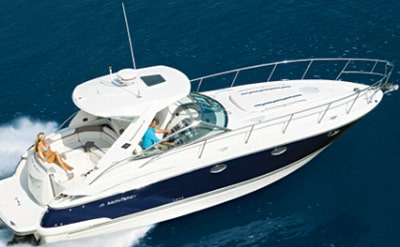
Another Option…Monterey 360SY From its racy, low-slung profile to its almost sportscarlike helm station with chrome-on-black wheel, the 360 oozes performance — and backs it up with as much as 860 hp. montereyboats.com
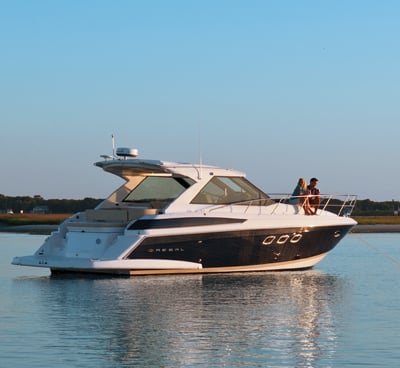
42 Feet: Regal 42 Sport Coupe This 42-foot Regal and similar cruisers in its class are your entries into the world of “big boats.” Fully enclosed helm decks become the norm, and many are diesel pod-powered boats. Generators and air-conditioners are mandatory, if not standard. Regal’s 42 also offers goodies like an electric sunroof and a walk-through from helm to foredeck. Belowdecks, Regal focuses on generously sized sleeping areas, twin heads, a separate shower stall and plenty of room in the galley. In Boating tests when equipped with twin 300 hp Volvo Penta IPS pods, it achieved a cruising speed of 28.7 mph with excellent 1.36 mpg fuel economy. The trade-off? Long gone are the days of nosing onto a beach. Of course, there’s room to carry a dinghy for that purpose.
Contact: Regal Marine Industries Orlando, Florida; 407-851-4360; regalboats.com
Class Advantage: True privacy belowdecks, thanks to twin, bulkhead-and-door staterooms and possibly even separate heads.
Specs LOA: 42’4″ Beam: 13’0″ Displacement (lb.): 19,500 Fuel Capacity: 280 gal. Max Horsepower: 700 Range at Cruising Speed: 298 nm Berths: 6
Price: $665,000 (with twin 300 hp Volvo Penta D4 turbodiesels)
Gotta Have: Electric grill in the wet bar makes your boat party central.
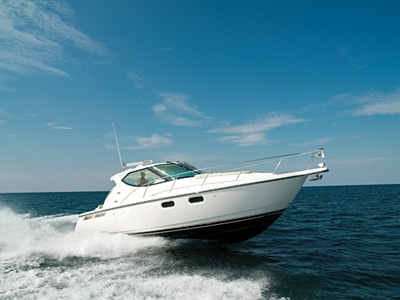
Another Option…Tiara 3900 Sovran Tiara realizes cruising is often for one couple only and responds with the single-stateroom Sovran. The added space allows for a generous galley and home-theater-style lounge. tiarayachts.com
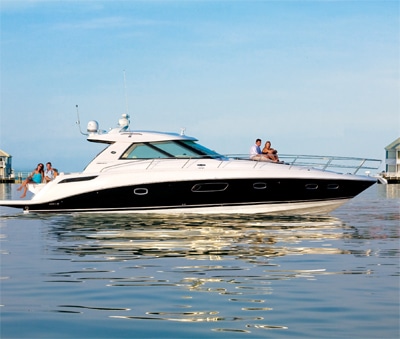
45 Feet: Sea Ray 450 Sundancer Set up primarily for entertaining, the 450 Sundancer offers a master stateroom forward in an otherwise open plan that features a media room aft, which can sleep two. No doubt, cruisers in this size category begin incorporating some seriously luxurious characteristics. Take, for instance, the Japanese Shoji doors and solid-wood cabinetry throughout the 450 Sundancer. Occasional guests can draw the curtain and sleep on the convertible queen lounge. And when the party’s over, a couple heading off for the weekend will enjoy the boat’s climate-controlled, three-sided hardtop and its 70-gallon freshwater capacity. Most of all, they’ll find that an open layout like the Sundancer’s makes the boat more livable than one that has been cut up into separate cabins.
Contact: Sea Ray Knoxville, Tennessee; 800-772-6287; searay.com
Class Advantage: Many boats that are big enough to go even with the wind blowing do double duty as entertaining platforms. Open floor plans allow a party of 20 at the dock, and a cruising couple can stretch out.
Specs LOA: 45’4″ Beam: 13’2″ Displacement (lb.): 27,205 Fuel Capacity: 285 gal. Max Horsepower: 850 Range at Cruising Speed: 213 nm Berths: 6
Price: $836,029 (with twin 364 hp Cummins-MerCruiser QSB 380 Zeus)
Gotta Have: Cockpit heat/air makes helm deck a climate-controlled second salon.
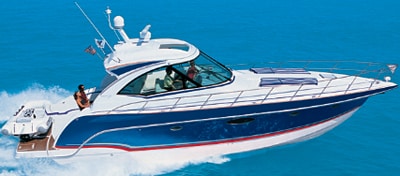
Another Option…Formula 45 Yacht Two boats are better than one. Formula’s optional remote-controlled, hydraulic swim platform can carry a PWC for quick trips to shore — or when your crew is longing for a little playtime. formulaboats.com
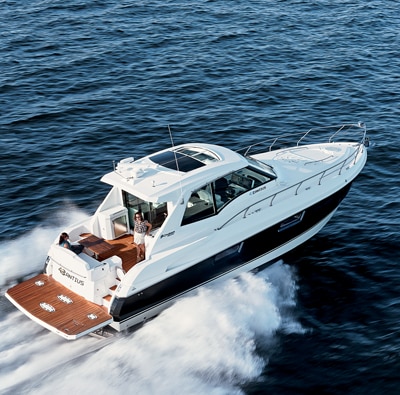
48 Feet: Cruisers Yachts 48 Cantius At nearly 50 feet, the Cruisers 48 Cantius, and boats like it, can comfortably cruise a family for a week or a snowbirding couple for an entire season. With large staterooms (the master featuring a queen-size bed), a flatscreen-equipped salon that’s big enough to dance in, a galley that includes an upright refrigerator/ freezer and even an optional washer/dryer, the Cantius is equipped for life aboard. Heck, even this boat’s swim platform is large enough for entertaining. The engine compartment is similarly spacious, as it is in most cruisers in this size class, and it offers easy access to vital systems, with plenty of storage capacity to boot. Finally, the Cantius is a performer, attaining a top speed above 37 mph.
Contact: Cruisers Yachts Oconto, Wisconsin; 920-834-2211; cruisersyachts.com
Class Advantage: This class offers the size, interior space and amenities to hit the spot for two couples on extended cruises.
Specs LOA: 46’6″ Beam: 14’6″ Displacement (lb.): 32,000 Fuel Capacity: 400 gal. Max Horsepower: 870 Range at Cruising Speed: 315 nm Berths: 6
Price: $916,820 (with twin 435 hp Volvo Penta IPS 500)
Gotta Have: Optional hydraulic swim platform makes launching your RIB or PWC easy.
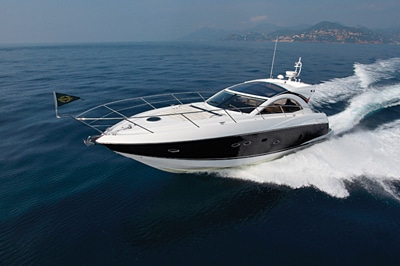
Another Option…Sunseeker Portofino 48 Sunseeker mixes it up, offering a double bed in the forward “VIP suite” that swings apart to form two separate, single berths. The Portofino is also offered in either open or hardtop versions. sunseeker.com
- More: boat tests , Boats
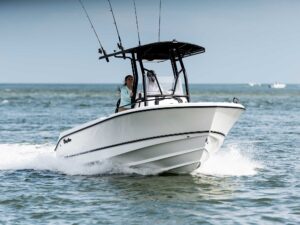
Boat Test: 2024 EdgeWater 208CC Watchman
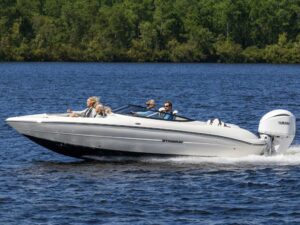
Boat Test: 2024 Stingray 23 OSX
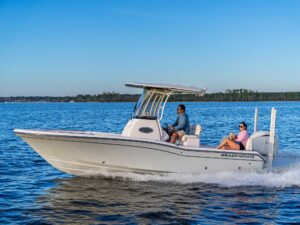
Boat Test: 2024 Grady-White 231 Coastal Explorer
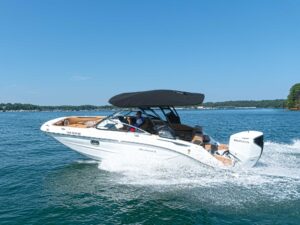
Boat Test: 2024 Hurricane SunDeck 2600 OB
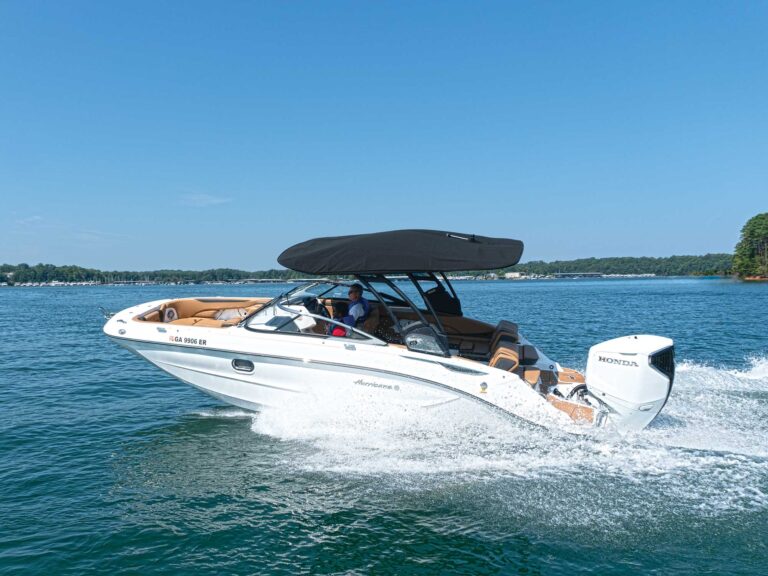
Boat Test: 2024 Brabus Shadow 1200 Sun-Top
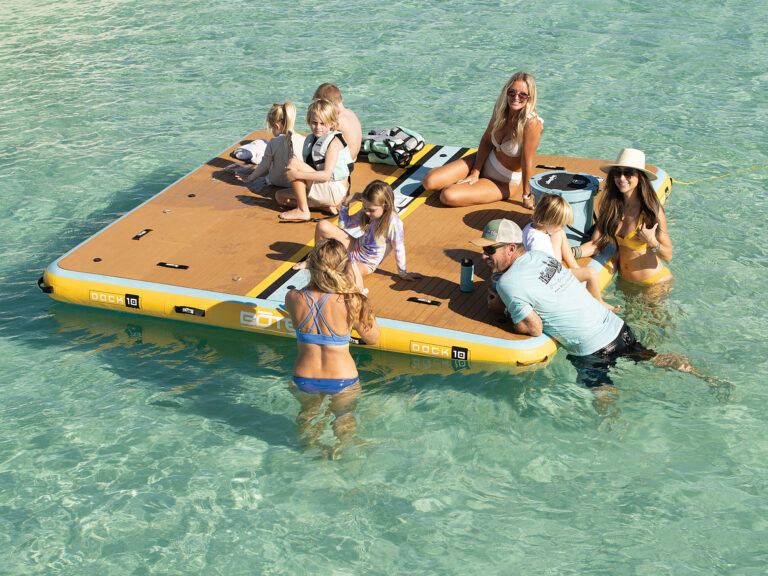
Inflatable Water Mats for Boaters
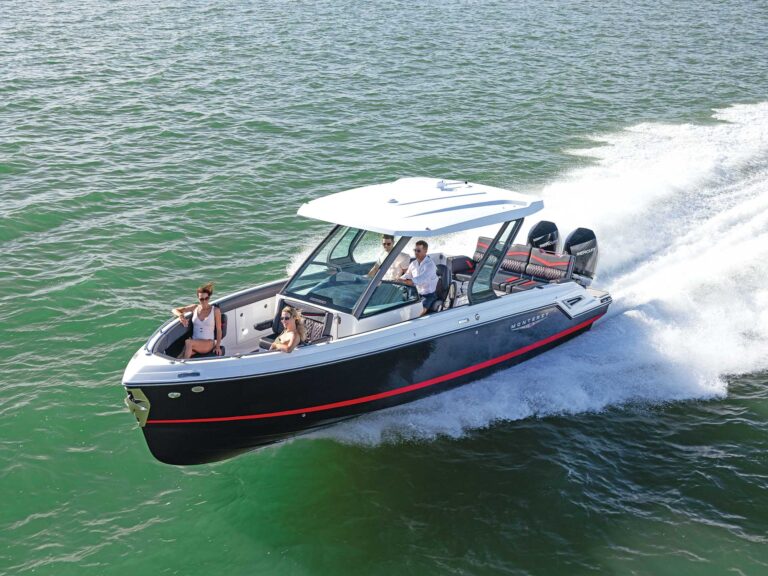
Boat Test: 2024 Monterey Elite 30

- Digital Edition
- Customer Service
- Privacy Policy
- Terms of Use
- Cruising World
- Sailing World
- Salt Water Sportsman
- Sport Fishing
- Wakeboarding
Many products featured on this site were editorially chosen. Boating may receive financial compensation for products purchased through this site.
Copyright © 2024 Boating Firecrown . All rights reserved. Reproduction in whole or in part without permission is prohibited.

Yacht vs. Cruise — What's the Difference?
Difference Between Yacht and Cruise
Table of contents, key differences, comparison chart, primary use, operational cost, compare with definitions, common curiosities, do yachts and cruise ships follow similar safety regulations, how do the environmental impacts of yachts and cruise ships compare, what type of crew is required for a yacht compared to a cruise ship, are yachts or cruise ships more affected by weather conditions, how does the onboard dining experience differ between yachts and cruise ships, how do maintenance costs compare between owning a yacht and operating a cruise ship, what entertainment options are available on yachts versus cruise ships, can both yachts and cruise ships be used for special events, what are the booking and planning processes like for yachts versus cruises, how do the privacy levels compare between yachts and cruise ships, what destinations are typically available for yacht charters versus cruise routes, can yachts navigate narrower or more shallow waterways compared to cruise ships, how does the experience of time at sea differ between yachts and cruise ships, what types of cabins can be found on yachts compared to cruise ships, what kind of training do crew members need for yachts compared to cruise ships, share your discovery.

Author Spotlight
Popular Comparisons

Trending Comparisons

New Comparisons

Trending Terms


Yacht vs Cruise Ship: Key Differences Explained
Many travelers look at luxury yacht rentals and cruise ships when planning a vacation at sea. But there are some major distinctions between these two options. Understanding the key differences can help you choose the best one to suit your needs and expectations.
Size and Capacity
The most obvious difference is size and guest capacity. Cruise ships are massive, housing 2000-6000 passengers.
Even small ships carry 600+ people. In contrast, chartered yachts max out around 12 guests, with typical capacities of 6-10. The intimate scale ensures an exclusive escape.
Itineraries and Flexibility
Cruises sail along fixed routes and strict schedules, whereas yacht charters offer total itinerary flexibility. Craft your own custom route with a captain. Spend more time in spots you love and bypass others. The only fixed elements are your start/end ports.
Onboard Experience
The onboard ambiance varies dramatically between the two. Cruise ships feel like floating cities with crowds everywhere. You’ll share amenities with thousands of fellow passengers. Chartered yachts provide a private, peaceful retreat catered to you. No queues or sharing.
Activities and Entertainment
Both offer plenty of amenities, but the vibe is different. Cruises offer fun activities like casinos and shows, while yachts provide relaxation and adventures like snorkeling and fishing. The choice depends on your interests.
Service and Cuisine
With thousands of guests, cruise staff and dining cannot provide truly personalized service. You get more staff interaction on a yacht, including a captain dedicated to your charter. Included in the experience is fine dining with customized menus and premium alcohol.
For an exclusive getaway on your terms, a private yacht charter reigns supreme. But mass market cruises suit travelers who enjoy crowds and scripted entertainment. Evaluate your priorities to choose the best seafaring vacation.
Booking and Costs
Booking a cruise is relatively simple through major cruise lines or agencies, while yacht charters require researching reputable brokers and charter companies, of which there are many. Cruise fares per person are lower, but a fully crewed yacht divided among guests can still be competitive. Keep costs variable by booking a bareboat yacht charter.
Destinations and Departure Ports
Cruise ships certainly provide a wide variety of itineraries, but their large size limits them to major cruise ports. Yachts can access small coves, secluded islands, and exotic locales that mega-ships can’t reach. Many more departure ports are accessible for yacht charters too.
Onboard Accommodations
Staterooms on a cruise provide basic comfort, often with an ocean view. Yachts feature lavish staterooms and master suites with hotel-style amenities. You’ll get complete privacy, often with en-suite bathrooms. Some large charter yachts rival small boutique hotels in luxury. .
Health and Safety
Mass gatherings on cruises can enable the rapid spread of illnesses like COVID or norovirus. Yachts provide isolation from crowds and allow immunocompromised guests to vacation safely. Strict protocols keep private yachts disinfected, and both options mandate safety drills and procedures.

Read Our Billfish Policy

Our Crews Prefer

Express Cruiser Boats
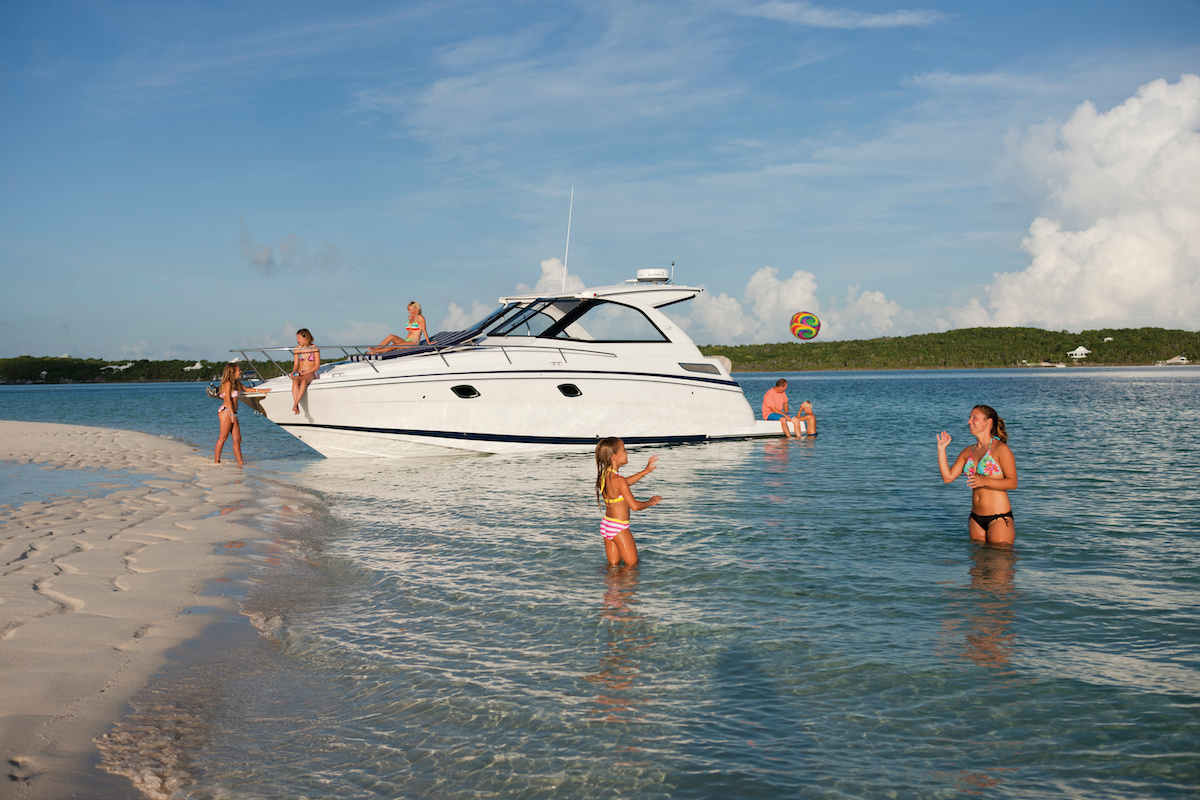
There are a lot of different types of boats to choose from, and the nomenclature for distinguishing one from another can get confusing. The way to tell boats apart is partly by appearance and partly by their intended use. One subset is the express cruiser, or express boat, that is quite popular as a fast cruising boat and is part of the motor yacht/power cruiser family.
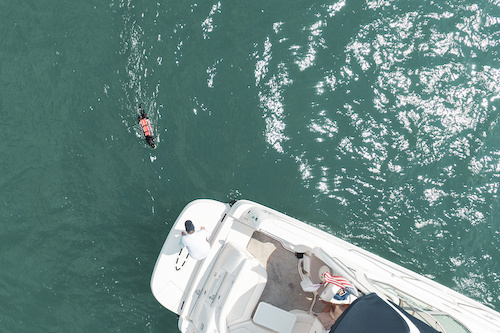
Explore Motor Yachts/Power Cruiser Boats
What is an Express Cruiser Boat?
An express cruiser looks different from a true motor yacht although it may serve roughly the same purpose.
- Express boats tend to be sleeker with large open cockpits that mix indoor and outdoor living and entertaining.
- The helm is tucked up by the windshield and is usually (although not always) slightly elevated from the rest of the cockpit amenities.
- By design, express cruisers tend to have more outdoor space but they often come with multiple cabins and a head with shower below.
- Some express boats keep the galley outside and offer multiple refrigerators, a grill and a sink.
Express cruisers are usually in the 30-50-foot range but they can be smaller or even quite a bit longer. They’re speedy—cruising 25-30 knots or more. They’re typically powered by twin diesels, sometimes with pod drives. Smaller express cruisers may be powered by stern drives with an inboard engine and an outdrive at the stern. Although traditionally express cruisers have not featured outboard engines, this is changing rapidly.
Learn More About Engine Types
What Can You Do With an Express Cruiser?
Boats today are becoming SUVs with the ability to morph and do much for many. That said, express cruisers aren’t the best watersports towing or angling boats . They’re high performance vessels meant to get anywhere at speed and are mostly used for day outings and entertaining. Yes, you can ski behind one and yes, you can weekend on one especially if it has below decks accommodations, but the typical use for an express boat is long fun days on the water with the family and entertaining friends with full dinners and cocktails in the evenings.
Express Cruiser Advantages
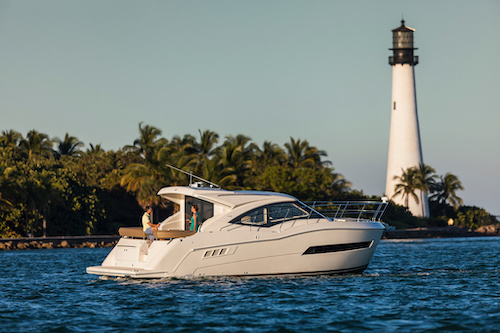
Express cruisers probably find the sweet spot for most families’ needs.
- They can get to the sand bar quickly so the kids can play.
- They can tow guests on water toys and in a pinch.
- You can probably do some basic fishing from the swim platform although most of these models don’t have livewells.
- Although most of the activity is meant to be in the cockpit, express cruisers offer separation so some can listen to tunes aft while others read on the bow sunpad.
Depending on the model and size, express cruisers can be ideal for large lakes or coastal work. They’re all-around boats for sightseeing and absolutely excel at on-deck entertaining in good climates since everything is pretty much in the same place and usually on one level. Everyone is in the middle of the social action, even the chef and driver. Express cruisers can also be a sexy mélange of clean lines, low profiles and careful styling and their familiar profile tends to appeal to a broad audience.
Express Cruiser Disadvantages
Express cruisers are the boats that are meant to do that middle duty of boating and that means there are ends of the spectrum where they don’t excel.
- Long distance cruising, especially in inclement weather, isn’t their specialty due to limited deck and cabin room and skimpy stowage space.
- Their large engines offer good speed but not the best fuel economy and that means that express cruisers may have a limited range.
- Big engines can also make these models pricey for their size.
Is an Express Boat Right for You?
In the end, if you're searching for specialized needs suitable for competitive watersports thrill-seekers or serious anglers, an express cruiser will not be a go-to—but for general family boating, it’s generally the people’s choice.
Read Next: Motor Yacht Buyer's Guide
You Might Also Like:
- Why Should You Buy a Certified Boat?
- Catamaran Boats: Types, Uses & Activities
- Overnight Cruising Basics
- Understanding Boat Financing Options
- Find the Right Boat for Your Lifestyle

Join Our Newsletter!
Get community news, buying bargains, and how-to guides at your fingertips.

Yacht Sourcing > Yacht vs Cruise Ship: Which One is Right for You?
Yacht vs Cruise Ship: Which One is Right for You?
- June 25, 2024
When considering a luxury vacation on the water, the primary choices often come down to a yacht or a cruise ship. Both offer incredible experiences, but there are some key differences you should consider before making a decision. In this article, Yacht Sourcing will explore the main differences between a yacht vs cruise ship to help you make the best choice.

What is a Yacht?
A yacht is a private vessel that is usually smaller and more intimate compared to a cruise ship. Yachts are often used for private trips or exclusive charters, offering greater privacy and flexibility. At Yacht Sourcing, we offer a wide range of luxury yachts equipped with modern amenities and exceptional personalized services. Understanding the difference between a yacht vs cruise ship can help you decide which fits your lifestyle better.

What is a Cruise Ship?
A cruise ship is a large vessel designed to carry hundreds to thousands of passengers on long sea voyages. Cruise ships offer a variety of amenities, such as restaurants, swimming pools, entertainment, and numerous activities. They are ideal for those who want to enjoy a sailing experience with plenty of facilities and social interactions. Comparing a yacht vs cruise ship, you will find that cruise ships offer a more communal experience.
Key Differences between a Yacht and a Cruise Ship
1. Size and Capacity : Yachts are typically smaller and can accommodate fewer passengers, whereas cruise ships can carry thousands of passengers at once. When comparing a yacht vs cruise ship, size is a significant factor.
2. Privacy and Exclusivity : Yachts offer more privacy and exclusivity, ideal for private or family trips. Cruise ships are better suited for those who enjoy a social atmosphere and meeting new people.
3. Amenities and Activities : Cruise ships offer a wide range of amenities and onboard activities, while yachts provide a more personalized and flexible experience.
4. Routes and Destinations : Yachts allow you to explore more secluded and exclusive spots, whereas cruise ships have more fixed routes and often visit major ports. Considering a yacht vs cruise ship, the choice of destinations can be quite different.

Which One is Right for You?
The choice between a yacht vs cruise ship depends on your personal preferences. If you seek a more private and exclusive experience, a yacht might be the best choice. However, if you want to enjoy a variety of amenities and meet many people, a cruise ship could be the right option.
For more information about our luxury yacht options and charter services, visit the Yacht Sourcing website or contact our team, who are ready to help you plan your dream vacation on the water.
Interested about this topic? Check out other articles from Yacht Sourcing below:
- The Best Time to Visit Bali for an Unforgettable Experience
- Cruising in Elegance: Discovering the Allure of Pink Beach Indonesia with Yacht Sourcing
More Stories

Ultimate Yacht Party with Nala: A Phinisi with Modern Touch

A Small Yacht with Big Features: Explore the Al Dhaen 365 Center Console

Cannes Yachting Festival 2024: Majesty Yachts to Announce New Model

Embrace the Nomad Life on a Motor Yacht

Discover the Best Beaches in Nusa Lembongan with Forever Cruise

Yacht Brands: Exploring Yacht Sourcing’s Exclusive Portfolio

HEADQUARTER
Destinations
Yacht management
BUY A YACHT
CHARTER A YACHT
MANAGE YACHTS
- @[email protected]
- +62 812 3600 1024
Get an exclusive offer for yacht charter and sales, also get the latest yachts update right in your inbox!
What’s the Difference Between a Yacht and a Cruise Ship?
By Robert Palmer
Yachts and cruise ships are two different types of vessels that have been used for centuries to travel the sea. Both are great ways to explore the world, but there are some key differences between them.
Size – One of the main differences between a yacht and a cruise ship is the size. A yacht is typically much smaller than a cruise ship, with most yachts ranging from 30-150 feet in length.
Cruise ships, on the other hand, can be much larger with sizes ranging from 200-1,000 feet or more. This size difference also affects their capacity; yachts generally carry fewer passengers while cruise ships can accommodate thousands of people at a time.
Design – Yachts and cruise ships also differ in design and layout. Yachts tend to be designed for luxury and comfort, often with multiple decks, spacious bedrooms and luxurious amenities like hot tubs and Jacuzzis. Cruise ships are typically more utilitarian in design, with limited private rooms but plenty of shared public spaces like restaurants, bars and entertainment venues.
Speed & Maneuverability – Another area where yachts differ from cruise ships is in speed and maneuverability. Yachts tend to be faster and more agile due to their smaller size, allowing them to navigate tight spaces or reach remote destinations quickly. Cruise ships are slower but still provide an enjoyable journey due to their larger size and abundance of amenities onboard.
Cost & Availability – The cost of cruising on a yacht or a cruise ship also differs greatly; yachts can be quite expensive as they require a captain and crew as well as fuel costs while cruises can be much more affordable depending on the destination and length of voyage. Additionally, yachts tend to have limited availability due to their smaller size while cruise ships offer more frequent departures throughout the year.
5 Related Question Answers Found
What is difference between ship and cruise, what is the difference between ship and cruise, is a cruise ship a yacht, what is the difference between cruise and ship, what is difference between cruise and ship, backpacking - budget travel - business travel - cruise ship - vacation - tourism - resort - cruise - road trip - destination wedding - tourist destination - best places, london - madrid - paris - prague - dubai - barcelona - rome.
© 2024 LuxuryTraveldiva
The 'knowledge gap' putting Australians' lives at risk
Learning this skill could mean "the difference between life or death", according to one expert..

CPR is used for emergencies such as allergic reactions, heart attacks, and drownings. Source: Getty / janiecbros

Should first aid training be compulsory for drivers? What Australia can learn from others

New research reveals Australian regions at higher risk of cardiac arrest
Share this with family and friends
Recommended for you

Why Australians are buying EVs even if they can't charge the cars at home
Electric vehicles

The bombs that sat under a school for decades
Pacific News

What's in store for summer? Australians have been told to 'prepare for anything'

'Shocking': NAB CEO wants 'outrageous' fee costing Australians $960m scrapped
Credit Cards

The new amount Australians need each year to retire comfortably
Superannuation

Australians could get two new COVID-19 vaccines — but they have something missing
Immunisation

These 'perks' are among the reasons why the rich are getting richer in Australia
Wealth Inequality

Sky's year 12 exams are just weeks away. He's been ordered to leave Australia
Get sbs news daily and direct to your inbox, sign up now for the latest news from australia and around the world direct to your inbox..
Morning (Mon–Fri)
Afternoon (Mon–Fri)
By subscribing, you agree to SBS’s terms of service and privacy policy including receiving email updates from SBS.
SBS World News

IMAGES
VIDEO
COMMENTS
What is the difference between a yacht vs cabin cruiser? The difference between a cabin cruiser vs yacht are the amenities and general construction. Yachts are often larger than cabin cruisers, often exceeding 40 feet in length. In addition, not all cabin cruisers will have multiple cabins, kitchens, and bathrooms, whereas yachts most often will.
This exploration will clarify what sets a yacht apart from the great many categories and varieties of boats on the market, which includes a diverse array of watercraft, making the distinction between a yacht and boat clearer. The Origin of Yachts. The word "yacht" is derived from the Dutch word for "hunter."
Updated February 27, 2024. Yachts come in various categories, such as motor yachts, express cruisers, flybridge yachts, sportfish yachts, and superyachts. But what exactly defines a yacht? Typically, yachts are considered to be in the 40-70 feet range, offering onboard accommodations, heads for overnight stays, and a galley for all your ...
What Are the Differences Between a Yacht and a Cabin Cruiser? When comparing a yacht to a cabin cruiser, several key differences arise, including dimensions, speed, amenities, and overall purpose. Each caters to varying lifestyles and preferences on the water, whether for leisurely cruises or fishing. Yachts are usually larger and more ...
Our Second Cabin Cruiser: "Seawon II" - 1972 to 1978. By 1972, we had two boys and needed more space aboard. A friend at our yacht club offered us his 26-foot Norwegian-built cruiser with twin sterndrive engines. It was the most beautiful design I'd ever seen - with a bar, v-birth, dinette and head with sink.
Sportfish, Express Sportfish, Flybridge Sportfish, Convertible. 1. Express, Express Cruiser, Cruiser, Sports Cruiser. These are all terms to describe a yacht with a single deck above the hull and living quarters below. This type is known for its sporty and sleek look, like the sports car of the yacht world.
Motor Yachts A motor yacht (also sometimes called a pilothouse or sky lounge motoryacht) is typically a larger vessel with several staterooms, heads and a galley. It may have a flybridge or be what's called a sport version with nothing on the hardtop but maybe a large sunroof. Motoryacht is a somewhat of a generic term but when applied to vessel styling, you can generally expect two levels ...
5. Luxurious Accommodations: Many cabin cruisers are designed with luxury in mind, offering high-end finishes and amenities that rival those found in upscale homes. 6. Ideal for Entertaining: Cabin cruisers are often used as floating party venues, thanks to their spacious interiors and convenient onboard amenities.
This category also uses names such as: EXPRESS CRUISER, CRUISER, SPORT CRUISERS, SPORT YACHT and among Europeans: OPEN and FEATURED. The Searay Sundancer 33 or 48 correspond to this description. FLYBRIDGE : boat that has a helm above the interior cabin accessible from the cockpit by stairs or ladder that allows an improved vision while ...
Although different countries may have different names for them, all modern military ships typically fall within seven categories. These include Frigates, Corvettes, Destroyers, Cruisers ...
Cruiser yachts typically have less room for such features and fewer cabins. Still, what it lacks on the inside is made up for by the emphasis on what is outside; you may find more outdoor space on a cruiser, so you can enjoy that fresh sea air. Motor yachts may be a better vessel for a fancy dinner party. But, the cruiser yacht may be better ...
Similar to a yacht or houseboat, cabin cruisers are perfect for overnight trips because they're equipped with a sleeping area, kitchen, and small toilet. ... a deck boat has the same sleek design with even more seating capability. The difference between the two is the rounding of the V-shaped bow. This simple change gives deck boats more ...
One of the main differences between a houseboat and a yacht is their design or appearance. If you take a closer look at a houseboat, you will notice it resembles something that looks like a floating home. And this explains why it's called a houseboat. It's a combination of a small house and a boat, thus the name.
Among the most popular form of cruiser, express cruisers range from 25- to 63-feet-long. Best uses: day trips and weekend overnight cruises. Cabin Cruiser— Though the term isn't used as often as it once was, a cabin cruiser features a raised cabin with side windows. The helm is usually beneath a hardtop, and the cockpit is open.
Cabin Cruiser vs. Cuddy Cabin vs. Yacht. While there are a lot of similarities between cabin cruisers and yachts, the differences that separate cruisers and yachts from cuddy cabins are quite stark. Cabin cruisers are far easier to transport than yachts since all except the largest and most extravagant luxury cabin cruisers are trailerable.
The Bayliner 285 SB will tote 28 gallons of water. Contact: Bayliner Knoxville, Tennessee; 360- 435-8957; bayliner.com. Advertisement. Class Advantage: Many stay within a beam of 8 feet 6 inches, and a 28-foot cruiser is still small enough to tow with a full-size vehicle. Specs.
Key Differences. Yachts are smaller, private vessels that offer luxury and exclusivity, typically accommodating a few dozen people at most. On the other hand, cruise ships are massive vessels capable of hosting thousands of passengers, emphasizing entertainment and amenities over privacy. Ownership is common with yachts, as they are often ...
2024 Ultimate Trawler vs. Yacht Comparison Guide. Welcome to our Trawler vs. Yacht Guide, your ultimate resource for understanding the unique benefits and features of these two exceptional vessels. Choosing the right trawler for sale is a significant decision, one that reflects your lifestyle, preferences, and maritime ambitions.
Size and Capacity. The most obvious difference is size and guest capacity. Cruise ships are massive, housing 2000-6000 passengers. Even small ships carry 600+ people. In contrast, chartered yachts max out around 12 guests, with typical capacities of 6-10. The intimate scale ensures an exclusive escape.
Express cruisers are usually in the 30-50-foot range but they can be smaller or even quite a bit longer. They're speedy—cruising 25-30 knots or more. They're typically powered by twin diesels, sometimes with pod drives. Smaller express cruisers may be powered by stern drives with an inboard engine and an outdrive at the stern.
Cruise ships are better suited for those who enjoy a social atmosphere and meeting new people. 3. Amenities and Activities: Cruise ships offer a wide range of amenities and onboard activities, while yachts provide a more personalized and flexible experience. 4. Routes and Destinations: Yachts allow you to explore more secluded and exclusive ...
Size - One of the main differences between a yacht and a cruise ship is the size. A yacht is typically much smaller than a cruise ship, with most yachts ranging from 30-150 feet in length. Cruise ships, on the other hand, can be much larger with sizes ranging from 200-1,000 feet or more. This size difference also affects their capacity ...
Yachts are the epitome of luxury on the water, each providing a unique experience and set of features. When exploring yacht options, you'll come across terms like convertible yacht, enclosed bridge yacht, and sky bridge yacht.Understanding the differences between these categories can help you make an informed decision when investing in a new vessel.
Founded in 1953 in Oconto, Wisconsin, Cruisers Yachts has a legacy of American craftsmanship, driven by generations of skilled boatbuilders. Offering diverse models to suit all preferences, the Cantius series emphasizes comfort, the GLS series delivers high-performance excitement, and the FLY series offers luxury with panoramic views.
Learning this skill could mean "the difference between life or death", according to one expert. CPR is used for emergencies such as allergic reactions, heart attacks, and drownings. Source: Getty ...